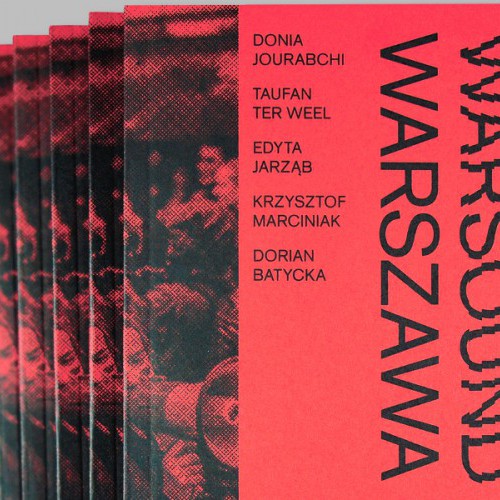
Activities
Upcoming
Ongoing
Past

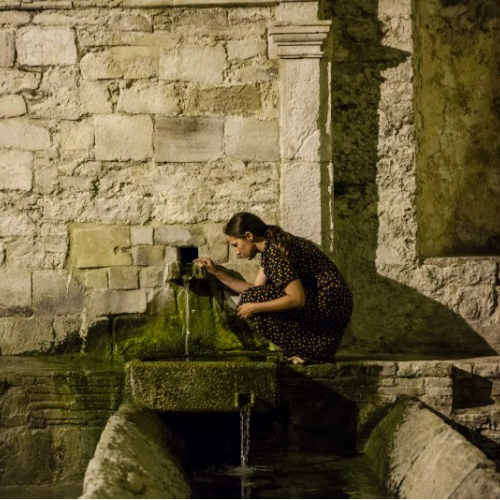
Francesca Saraullo & Cabiria Chomel with Theater Tartaar
Dancing Auto portraits in collaboration Theater Tartaar and de School van Gaasbeek.
Dancing Auto Portraits is a sonic & choreographic research project with metally disabled actors (Theater Tartaar) in the Belgian countryside.
Francesca Saraullo and Cabiria Chomel are artistically involved in ‘Rihabitare il futuro’, a project of cultural and artistic innovation for the Abruzzo region in Italy. "Re-inhabiting the future" is a project of artistic residencies and workshops in the countryside municipalities. The implementation of a series of theatrical events, aimed to blend artistic experimentation (music, dance, theater and performance arts) with the re-use and exploitation a living heritage and landscapes, victim of decades of neglect. The intent is to directly involve the people of the country in the process of creation and implementation. Through the concrete experience of performing arts, the local public will be guided towards education and awareness to create a "new" ,open and available way to use music, theater, dance and the performing arts in general.
"Re-inhabiting the future" means returning to the past from the rubble of consumerist globalization, re-read and update traditional forms of employment and sustainable interaction with the territory, to design a different future, or just a future.
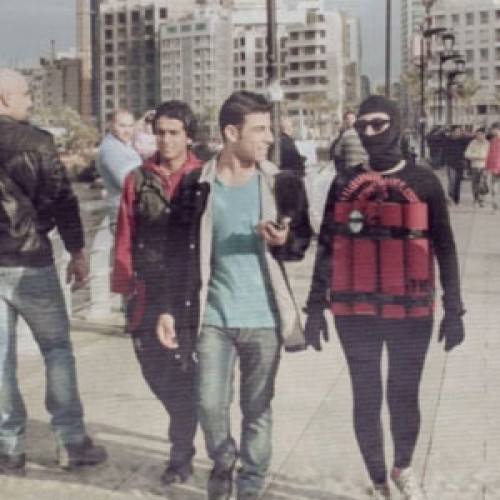
CTM 2017 Radio Lab Residencies
The CTM Radio Lab is an initiative that seeks unusual ideas for pairing the specific artistic possibilities of radio with the potentials of live performance or installation. For its 2017 edition, the Radio Lab specifically explored the CTM 2017 Festival theme: Fear Anger Love. Following an Open Call during summer 2016, a jury assembled in early september to review 150 proposals and chose two winning proposals. Selected artists - Julian Bonequi and Rima Najdi - will hold residencies in November/December 2016 in Berlin to develop their projects.
More information: http://www.ctm-festival.de/festival-2017/call-for-works/?no_cache=1
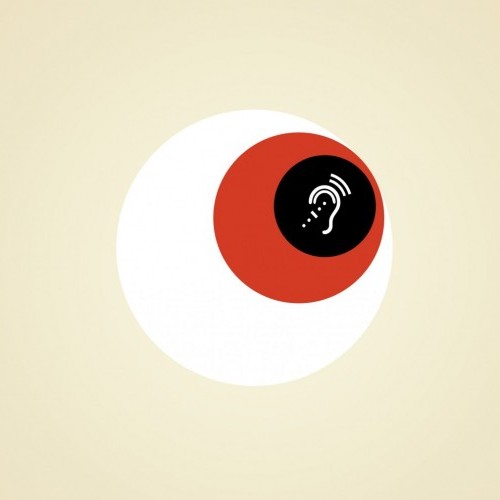
Land, People & Sound: Residency in Vouzela
After several many years hosting projects that worked thematic aspects of the territory that were beforehand proposed to artists (riverscapes, voicescapes, religion, rural architecture, social mobility), Binaural/Nodar has been working in 2015 and 2016 on the liberating nature of the absence of a script or of a previous guiding theme, inviting artists to emphasize organic, expressive and visceral contacts with landscapes of the Portuguese Lafões region, through workshops, performances and/or installations which senses are to be locally defined from the stimuli and interactions that ultimately are present.
The four artists who will do creative work in Vouzela have multifaceted and diverse paths in the fields of sound art, vocal performance, code-art, free improvisation and visual arts.
Juan Duarte
Sébastien Piquemal
Para-FonoM GO
The residency of Sébastien Piquemal and Juan Duarte Regino will be based on a workshop with youths from Vouzela, where they will build together a temporary installation in the surroundings of the town. Bespoke devices broadcasting sounds of the environment will be installed, which would be inaudible otherwise. The broad-casted sounds will then be listened to with a simple FM radio, and anybody tuned in to the right frequency can walk around, hunt and discover them. The relevance of this project goes further than merely learning on technology and it aims to use radio critically in the context of participatory art, empowerment and cultural identity through a guided sonic experience.
Emilie Bahuaud
Voices, sounds and words,
a walking diary
Voices, sounds and words, a walking diary is a project to be developed in and around Vouzela that associates sound creation and walking, in an organic manner. It’s a slow process of emergence of sound writing and introspective text, melodies and rhythms, of the body and its position in the environment, day after day and step by step, through the rigour of a repeated exercise as well as the release of the creative process. It might become a recorded diary, a concert, a radio piece.
Marialuisa Capurso
Rural Tableau
The need to listen, to reinvent our listening, the opening of the senses in a non-saturated place. A tactile approach which leads to the perception of otherness. The experience of the real by touch, thus reducing distances, and giving a sense of nakedness and exposure to the world. An investigation on how voice changes, on what the body feels and how it can relate to a specific environment. Marialuisa Capurso will work in Vouzela on the experience of otherness, using body and vocal sensory techniques to tune herself to a new rural environment, and later to record and map a series of long duration performances with the help of graphic scores.
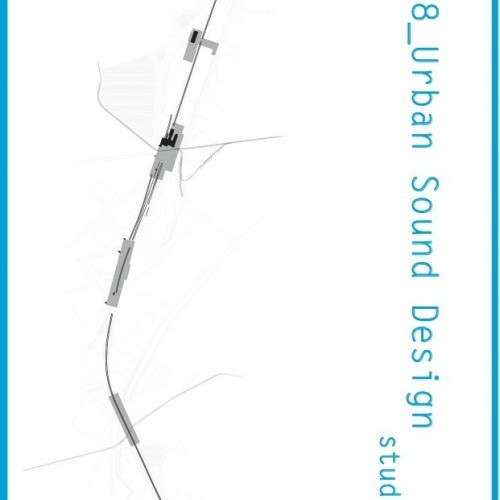
L28_Urban Sound Design with Caroline Claus
The undeveloped open space along the Western ring railway L28 has long been marginalized in Brussels planning processes. Thanks to its natural, historical and ecological richness the site is an excellent research object, especially in the context of urban sound design. The site in question is the environment of the railway line L28 in the municipalities of Anderlecht and Sint-Jans-Molenbeek with among others Weststation, the subway and tram yard 'Jacques Brel', the canal and the regional green network as prioritary projects of the urban development in the coming years.
Four workshops explore the relation between the sonic environment and the landscape of the area.
By means of soundscape research based on theoretical insights by Murray Schafer, CRESSON, Steve Goodman or Detroit Techno and the method of acoustic ecology, an overview of different components shaping the existent soundscape of the L28 is given. Through listening experiences accompanied by reflections via site-specific performances, a sound map and city sound walk, we analyze the very nature of the area. In a dialogue with experts from fields such as field recording, acoustic ecology and urban planning we reflect on how the current sound environment could be improved in a participatory manner.
The studio is organised on two strands: in the morning program talks and discussion will debate topics related to sound and urbanism, during afternoons field-work will be done on site. The mornings are open for all public, the afternoon sessions are limited to 10 participants and require inscription.
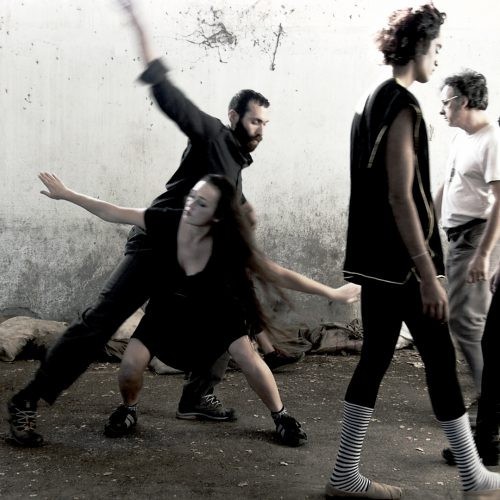
Medea Electronique
Since 2009 the artist collective Medea Electronique has organized annually a 10-day experimental artist residency, Koumaria, near Sparta in Greece, focusing on improvisation and new media practices. Avant-garde artists from all over the world, inspired by the Greek natural landscape, come together to create a multicultural and cross-media ‘dialogue’ culminating in a collective presentation in Athens at the end of the residency.
The goal of the residency is the creation of an educational experience for the participants that will inspire and exalt their future work. The cross-cultural dialogues that the residency engenders both create new artistic speculations and smelt older assumptions. Past residents have formed lasting friendships and new artistic partnerships. Medea Electronique, being an eclectic art collective, is interested in people from diverse cultural and artistic backgrounds. For us the residency serves as a model for future creative endeavors.
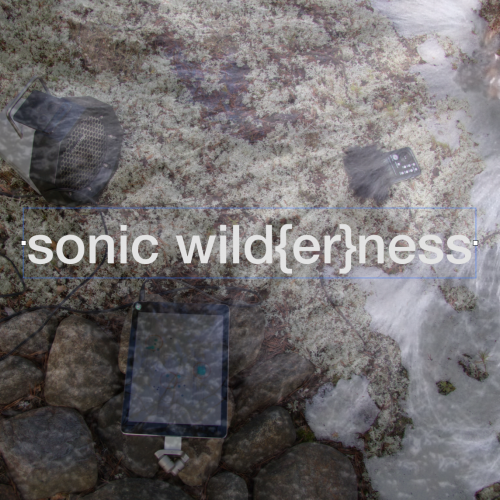
CALL: micro-residency 23-30 August #Hailuoto #Finland
.
SELECTED ARTISTS ARE:
Till Bovermann - http://tai-studio.org/
Anja Erdmann - https://anjaerdmann.wordpress.com/
Peter Kirn - http://pkirn.com/
Darsha Hewitt - http://www.darsha.org/
Annie Goh - http://goldsmiths.academia.edu/AnnieGoh
Lee Paterson - http://www.altblackpool.co.uk/breaking-the-soundart-barrier/
Katharina Hauke - http://www.3dmin.org/lecture-series/ws-20132014/entangle/
Inge Vanden Kroonberg - http://aifoon.org/
Jacob Remin - http://vsionhairies.info/
>>>>>>>>>>>
This is a call for 5 (out of 10) participants for the next micro-residency camp on the island of Hailuoto in northern Finland.
Main themes are:
- sonic wild{er}ness / music outside
- instrumentality of mobile sonic interventions
- sonification of matter & environment such as earth, stones, vegetation
- mycelium
Program: #SOCCOS - EU project Sound Of Culture & Culture Of Sound
Time: 23-30 August (23/30 travel days)
Flights: WE PAY average 250 Euro travel costs
Accommodation: free here, shared double bedrooms, if you want to rent an extra house, that can be arrangend on your own costs
local travel: included
Food: included, but collective cooking/ teams / vegetarian food
+ curation, lectures, teaching, mostly outdoor work, internet, LAB space, audio and video tech available, some production costs possible
There will be program 2-4 hours per day and rest flexible time. The idea is to work together.
Previous camps:
SOCCOS CAMP: ... more
Application deadline end of MAY (immediate travel booking is must, re prices, limited flights etc)
Please send very SHORT info letter about you, 10 sentences and links or CV to antye.greie AT haiart DOT net
WELCOME and spread!
——>
flight info: Arrival airport is Oulu/ Finland
due to island / ferry realities, flights should arrive 5/6pm and not leave before 8am on 30th collective pick up on 23rd to island 7pm Oulu Airport, if you book your flight late and there is no ferry no more, very difficult to get to island, you pay extra for accomm etc
ask me any questions in this regard, dont take the travel lightly, its far and expensive and complicated
but i help and advise…. recommended airlines Finnair (book asap), norwegian (book asap re seats sold out) there is also possibility to fly helsinki and take a train to Oulu. ask if questions
Hai Art: curation, activism & sound in Hailuoto / Finland
Updates:
http://www.facebook.com/HaiArt.Hailuoto
https://twitter.com/#!/HaiArt1
https://soundcloud.com/haiart
https://soundcloud.com/kaiku_hailuoto
Hai Art Soccos activities: http://soccos.eu/organisations/detail/4
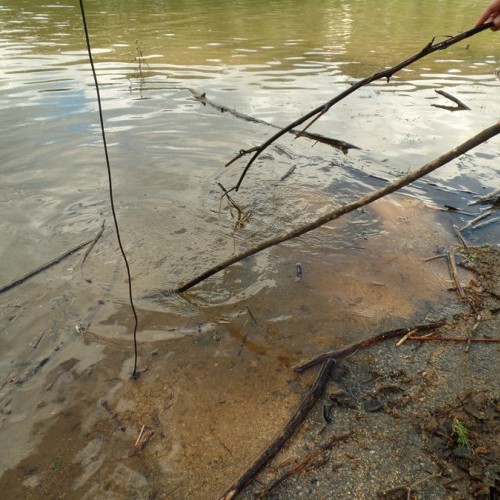
Vougascapes #4: micro-residency in Portugal
Vougascapes #4 - International Summer Sound Practice and Social Research Residency
Municipalities of São Pedro do Sul, Vouzela and Oliveira de Frades, Portugal
Organized by Binaural/Nodar
Directed by Luis Costa and Manuela Barile
August, 21st – 27th, 2016
Binaural/Nodar has a longstanding experience in working creatively with specific territorial subjects, as a way to embrace a deep reflection on the complexities of the real, particularly of its rural region, Viseu Dão Lafões in Center Portugal. Following previous projects dealing with subjects such as riverscapes, ethno-architecture, religion or rural mobility, we invite international young artists and/or social practitioners for a one week summer camp to collectively work on the geographical and social impacts of the recently built water dam of Ribeiradio in the municipalities of São Pedro do Sul, Vouzela and Oliveira de Frades.
During the week, participants will go through different in-the-field workshops coordinated by Binaural/Nodar team about the local geo-ethnographical context, sound recording/editing/mixing techniques, ethical/moral questions of site-specific artistic practices and cooperation methodologies to enhance collective work.
The end result will be a series of sound/media works, writings, drawings, photographs, etc. that will all contribute to a final small publication to be released later in the year.
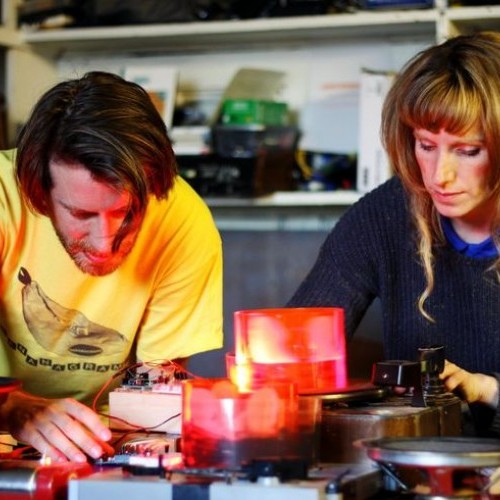
Vicky Clarke & David Birchall
Noise Orchestra are sound artists David Birchall and Vicky Clarke who create NOISE MACHINES that translate light into sound. Inspired by the radical spirit of the post revolutionary Russian avant garde; they combine light, turntables, analogue electronics and graphical scores to turn images and objects into noise, a process called graphical sound. Following a residency at the National Media Museum UK in 2015 (‘Play the Collections’, UNESCO 2015 Year of Light) and a research trip to Moscow; in 2016 they have been developing a series of Noise Machines as part of the ‘Madlab Arts+Tech Creative Accelerator’ for artists working with digital technologies.
For the Q-O2 residency, Noise Orchestra will bring these prototypes and create new oscillator circuits to create a new performance/assemblage researching the interactivity of the circuits and light/movement sources inspired by the urban and rhythmic environment of Brussels.
David Birchall is an improvisor interested in how living things, sounds and spaces interact.
Vicky Clarke is a sound artist interested in sound as material, object, archive and sculpture.
From the artists' documentation at noiseorchestra.org
Listen here or watch an unedited video documentation here.
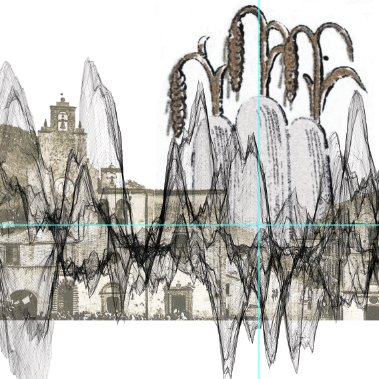
Suoni di Monte d’Oro: summer sound art residency in Abruzzo
Suoni di Monte d'Oro
A Sound & Media Arts Residency
Co-organized by Bambun and Binaural/Nodar
Montorio Al Vomano, 14-20 Luglio 2016
SUONI DI MONTE D'ORO is an artist residency co-organized by two cultural organizations, Bambun from Abruzzo, Italy and Binaural/Nodar from Portugal. The residency will take place between July 14 th and 21 st , 2016 in and around Montorio al Vomano (province of Teramo, Abruzzo, Italy) as an integral part of both Interferenze/Liminaria Festival and SOCCOS, a European network of artist residences in sound art.
This residency is a direct result of a web of alliances between associations, researchers and artists from different countries and regions in Europe, which share the common perspective of understanding rural areas as privileged spaces for reflection and multidisciplinary action, thus moving away from simplifications about rural and other peripheral regions, derived from both national and supranational centralized economic policies and strategies, most often distant from the real motivations of local populations.
Life in rural and mountain areas is made everyday by ordinary people, through an often-invisible network of memories, expectations and relationships that are likely to be totally ignored in the incessant flow of global information. It is to bring this intimate and subtle sense of places into light that it is necessary to document and express them, in an attempt to transmit and to allow the survival of ways to feel, to live and to act that are still relevant in today's world, in opposition to so many anxieties and uncertainties that mark everyday life. For about a decade Bambun develops intense ethno-anthropological and ethno-musicological research in the region of Abruzzo and broadly in the central Apennines, through which it has set itself the objective to exercise constant and capillary action of documentation and of renewed narration of the territory both through text and multimedia tools, analyzing in particular festive systems and ritual practices, legendary and hagiographic complexes, agricultural and pastoral works, human-animal relationship, emigration and war, relationship with the mountain and rural environment, the genealogical articulation and familiar patterns.
In the context of an European project, Network Tramontana, Bambun has established an intense collaboration with the Portuguese cultural organization Binaural/Nodar, which develops a 10 year work in rural areas of the Viseu Dão Lafões region through contemporary creativity, in particular through the art of sounds: rural sounds as an interpretive and expressive system of the past and geo-social change of specific territories. The complicity between these two organizations has also gradually been transformed into a complicity between their territories, located in different countries but being close because sharing many common elements, integrated in a history and worldview that also includes euro-Mediterranean regions in Spain, France and Greece.
Recently, the two organizations have come into contact with the team of Interferenze/Liminaria Festival that develops over ten years a critical dialogue between the Italian rural south, sound art and experimental music. It was precisely this open dialogue that created the basis for cooperation in the context of Interferenze/Liminaria Festival, which also aims to develop a permanent nature, with the creation of the project New Apennine Sounds that is set to continue both reflections and contemporary expressions of territories located along the Italian Apennine mountain ranges.
Project's website: http://nuovisuoniappennino.liminaria.org/
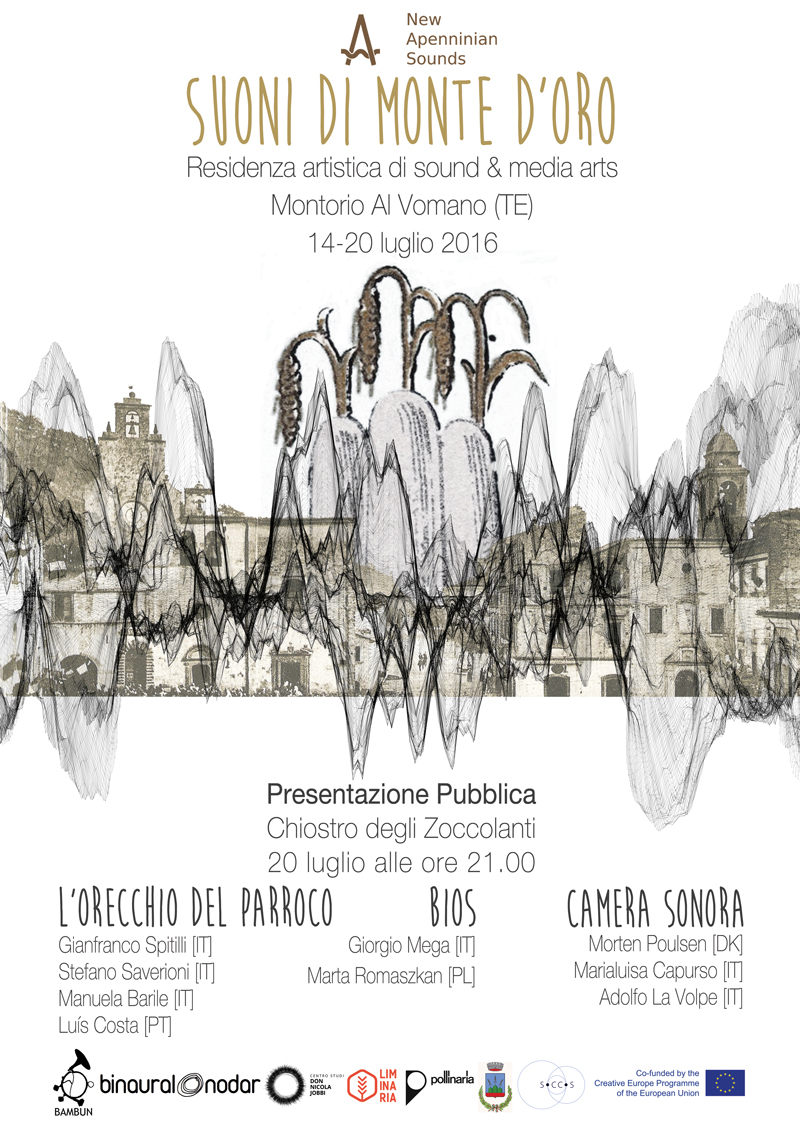
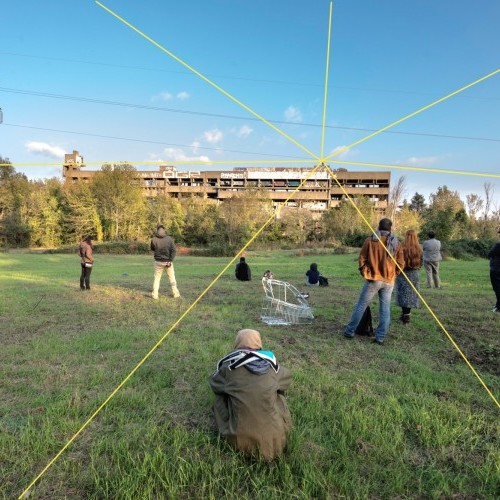
Davide Tidoni at AIR Laboratory CCA Ujazdowski Castle
We are happy to announce the residency of Davide Tidoni in AIR Laboratory CCA Ujazdowski Castle in Warsaw!
The Warsaw edition of SoC-CoS aims to react to the actual problems in the city soundscape – research on sound in its political and ecological aspect.
In 2016, the sounds of demonstrations and political protests became a very important part of the sonic environment of Warsaw. Organisers of these events were rarely aware of just how important a role sound can play during protest. The activities of sound artists Donia Jourabchi and Davide Tidoni, invited to partake in the residence at AIR Laboratory in June and July 2016, were linked to the topic of the acoustic design of demonstrations, politics of sound, and the critical potential of soundart. The sound, in this case, is considered a tool that can be used by the citizens to express their political opinions and stand up for their rights. Residents cooperating with Warsaw artist Edyta Jarząb and Cafe Kryzys were searching for new strategies of designing the sound of political protest and protesting through the use of sound; they organized workshops and improvised sound interventions in public space, but also actively participated in the ongoing demonstrations. The ongoing research on political activism and sound will be summarised in the form of short publication, whose launch is expected to take place in the Autumn of 2016.
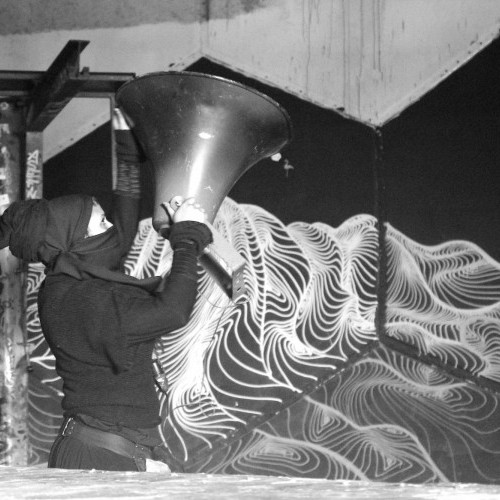
Donia Jourabchi at AIR Laboratory CCA Ujazdowski Castle
We are happy to announce the residency of Donia Jourabchi in AIR Laboratory CCA Ujazdowski Castle in Warsaw!
The Warsaw edition of SoC-CoS aims to react to the actual problems in the city soundscape – research on sound in its political and ecological aspect.
In 2016, the sounds of demonstrations and political protests became a very important part of the sonic environment of Warsaw. Organisers of these events were rarely aware of just how important a role sound can play during protest. The activities of sound artists Donia Jourabchi and Davide Tidoni, invited to partake in the residence at AIR Laboratory in June and July 2016, were linked to the topic of the acoustic design of demonstrations, politics of sound, and the critical potential of soundart. The sound, in this case, is considered a tool that can be used by the citizens to express their political opinions and stand up for their rights. Residents cooperating with Warsaw artist Edyta Jarząb and Cafe Kryzys were searching for new strategies of designing the sound of political protest and protesting through the use of sound; they organized workshops and improvised sound interventions in public space, but also actively participated in the ongoing demonstrations. The ongoing research on political activism and sound will be summarised in the form of short publication, whose launch is expected to take place in the Autumn of 2016.
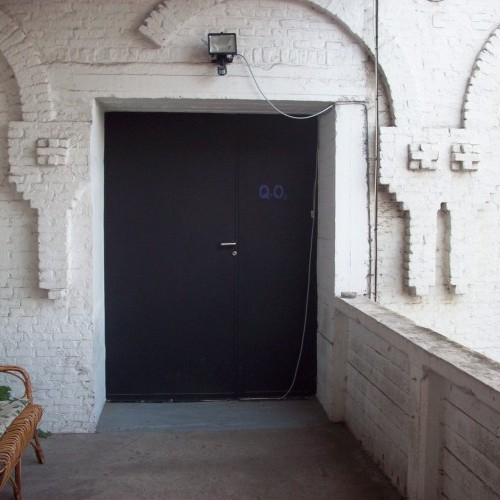
Q-O2 micro-residency
This micro-residency is directed to students or young professionals with a practice in music and sound art. The topical complex on which we will work is voice, gender, language and identity.
A group of ca. 10 participants will be guided through a program of workshops (Myriam Van Imschoot, Peter Westenberg, Marc Matter), presentations and visits at partner organisations in Brussels, but there will be also time to present and discuss each others work. On the last two days, 4th and 5th of June, there is the possibility to attend to a symposium which is organised at Q-O2 workspace within the project ‘the other the self’, presenting performances and lectures addressing the topic.
May 31st – Peter Westenberg: Backgrounds and practice of the language projects Parlez-vous Saint-Gillois and La Langue Schaerbeekoise.
Together we will look, listen and browse the collection of words and discuss aspects such as the subjectivity of the choices involved and the position of the artist-organisor as instigator and data collector. We will review the soundwalks, art interventions and online works that were developed by invited artists as part of the project, the methodology of making a neighborhood based, participatory audio project.
How are languages, politics, conviviality and identity connected in the context of multiverse cities such as Brussels ?
If the weather gods are with us, we will do this in the neighbourhoods that are portrayed by the projects. www.parlezvous1060.be www.lalangueschaerbeekoise.be
June 2nd – Myriam Van Imschoot: Inside outside voice workshop
This workshop proposes exercises to explore the physicality and vibration of the sound of one’s own voice in relation to other voices. An ear-corridor will be built and transformed into a human installation involving two swinging microphones.
June 3rd – Marc Matter: Speech – Voice – Sound: Who is speaking? What is speaking? And how?
This workshop explores various types of speaking through different kinds of voices. We will listen to and discuss recordings from the fields of the arts, entertainment, technology and everyday life. What impact do specific voices and manners of speaking have on a given text? How do these elements constitute identity and hierarchy? And can mere utterings of abstract voice-sounds ever be free of semantic value? In addition, we will practice some simple exercises concerning these questions.
June 3rd 18:00 to 22:00 presentation of the student’s work.
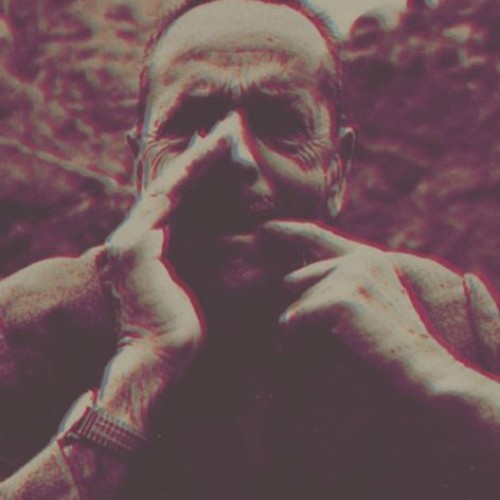
Heimo Lattner & Judith Laub
Spread the voice No. 1
Special situations call for special forms of communication. Sometimes the message complicates the situation, while other times, it's the situation itself that does that. In the case of the whistled language, Silbo Gomero, it’s a case of both.
On La Gomera, a volcanic island in the Atlantic Ocean, for centuries, the inhabitants of the mountain villages used to make themselves understood with whistles. They developed this form of communication to the extent that they could talk to each other in grammatical sentences and could even distinguish regional dialects. Between 1950 and 1980, the Silbo Gomera almost entirely disappeared due to the expansion of the telecommunications system, the development of a road network on the island and new employment opportunities in the tourism sector on the neighbouring islands. To turn the tide, Silbo Gomero became a compulsory subject at school, as a result of which nowadays, it is performed in restaurants and hotels as a local attraction.
Hence, the original context of whistling has been replaced by a new one. On the question of the meaning of this form of communication today, there is no simple answer, just like the definition of identity is always a proposition. Appropriating Silbo Gomero as a substitute for authenticity without substantiated historical processing and reflection, however, underlines the need for us to view the whistled language in a broader ideological context.
In collaboration with master whistler Kico Corra, historians and ethnologists from the Museo Etnográfico of La Gomera, communication and language scientist Arianna Ancarani, the musician and composer Werner Dafeldecker and playwright Karolin Nedelmann, several works in various artistic formats and contexts have been created in that context since 2012. Central to all these theoretical and artistic reflections is the whistle as a sort of secret code language, one that both separates and connects language and musicality as a cultural practice. Moreover, it is the ultimate way to produce sound from the human body without technical aids that guarantees maximum reach.
Our plan for Brussels:
Against the background of a historical conflict, a vote was held in Latvia on the country’s bilingualism in the context of a referendum in 2012. That was for us the basis for a sound installation within the context of sound art exhibition SKAN II in 2014 in Riga. In the run up to this event, the attempt to translate Latvian and Russian into whistle language was captured on film. That is how, during the recordings in the sound studio, we see master whistler Kico Correa read Latvian and Russian, while he communicates with us in French, and with the sound engineer in Spanish. And at the end, he also whistles the Latvian-Russian script. The recordings in question form the basis for a new job, trying to do a voiceover: voiceover, overvoice, voice over voice, tuning, overtuning ... all around the question as to which voice now has, in fact, the right to speak?

Vougascapes#3: student micro-residency in Casal de Sejães
Vougascapes#3
Student micro-residency
Casal de Sejães, Oliveira de Frades (PT)
Co-Organization: Binaural/Nodar & University of Aveiro
Support: Municipality of Oliveira de Frades
For the sixth consecutive year, Binaural/Nodar hosts on its territory an educational artist residency co-organized with the Master of Contemporary Artistic Creation at the University of Aveiro (Mestrado I Criação Artística Contemporânea, Universidade de Aveiro). This year, the residency is one of the activities of #SOCCOS Creative Europe project, of which Binaural/Nodar is part together with Q-O2, Hai Art, CTM Festival and A-I-R laboratory.
The participating students will do collective creative work on the banks of River Vouga, particularly near the village of Casal de Sejães, Município de Oliveira de Frades, near the recently built water dam of Ribeiradio-Ermida, assuming this water dam as an interesting context for landscape and social reflection and for sound-based contemporary artistic practice.
Specifically each students will be able to develop one or several of the following propositions:
Five minute non-stop sound recordings of impressionist aspects of the banks of the lagoon generated by the water dam
Five-minute sound interviews to local population with just two questions: what is your most ancient memory of the river? how do you imagine the village and the river bank to be in 20 years?
Ten-minute non-stop video recordings of specific points on the banks of the river.
A series of 5 to 10 photo sequences of micro-actions in the landscape
A series of automatic writings on sound and the local context, based on immediate impulses and not previous research.
All the collected material will be later used for a series of sound pieces with additional visual elements to be created by the students uintil the end of July 2016.
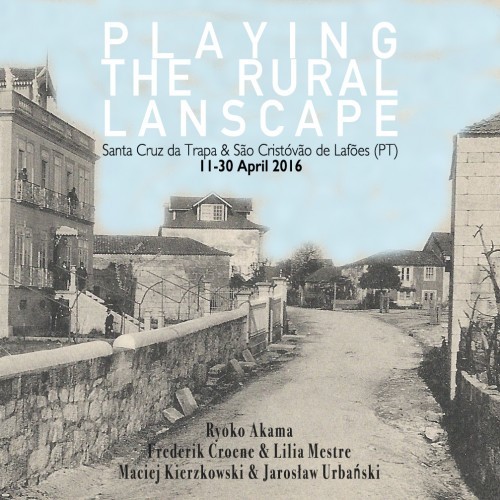
Playing the Rural Landscape: Residency in Santa Cruz da Trapa & São Cristóvão de Lafões
Playing the Rural Landscape
Sound art and experimental music artist residency
11-30 April 2016, Santa Cruz da Trapa & São Cristóvão de Lafões (Portugal)
Public presentation: 30 April, 16h00 (CCCP, Santa Cruz da Trapa)
In partnership with Município S. Pedro do Sul and União de Freguesias de Santa Cruz Da Trapa, Viseu, Portugal e São Cristóvão De Lafões, Viseu, Portugal.
With:
Ryoko Akama (JP)
Frederik Croene (BE) + Lilia Mestre (PT)
Maciej Kierzkowski (PL) + Jarosław Urbański (PL)
A sound art/experimental music residency with three completed diverse projects, under the generic concept of “playing the rural landscape” in its double, tactile and musical, meanings. The liberating nature of the absence of a script or of a guiding theme, inviting artists to emphasize the organic, expressive and/or visceral contact with (natural and built) landscapes of the Gralheira mountain range (São Pedro do Sul, Porugal), through performances and/or installations to be conceived from the stimuli and interactions arising during the residency.
Ryoko Akama
Object composition - meeting with wild objects, fetching and attempting to transform its comosition daily from installation to text score, then, these functions are enclosed as gift boxes.
In this project, I would like to scroll my way to the landscape as to encounter objects of the winderness, deliver them back to the space to construct sound installations that change daily, recorded daily. All possible materials used are then confined into several boxes and dispatch to... where?
Frederik Croene (BE) + Lilia Mestre (PT)
Performer/choreographer Lilia Mestre and pianist/composer Frederik Croene will use their residency in NODAR as an intensive, performative training in preparation for an artistic project planned for the school year 2017-2018 :“Academie De KunstBrug” in Gent / Belgium. In this project they will use a local art school as a zone for experimental research. Their interest is the classical art education framework (amateur and semi-professional), which is based almost entirely on instrumental learning, and its co-existence with an art and performance scene -also institutionalised- that wanders away from technique-based art production. During their residency, they will search for local, classic educational environments, putting embryonic performance ideas to the test. These ideas have been developed in a long process of reading and theorizing and can be put into three categories: the knowing/ignorant teacher and the ignorant/knowing pupil; the metaphoric distance between the classroom and the concert hall; the 19th century vision of virtuosity versus contemporary multi-faceted art practice. Due to professional circumstances, their residential stay at Nodar will be limited to 8 days. During the residency they will install a daily routine of performance practices that investigate how a contemporary art project can invade an art educational institution.
Maciej Kierzkowski (PL) + Jarosław Urbański (PL)
The aim of Udu-pture project is maintaining collective artistic process based on the Afro-European cultural heritage. The project is about common constructing of a big udu-drum in Lafoes region (Portugal) localisation, utilising the natural materials present in place. The aim is to create a permanent sound sculpture which could be used by everyone to create and feel the natural beats of the planet. The aim of the project is also to activate, educate and unite local communities. We are going to conduct ceramic and musical workshops for local children. The workshops' participants would also create own udu-drums of standard size, learn local folk rhythms and songs, and finally perform during the final live act of burning the big Udu-pture in external kiln.
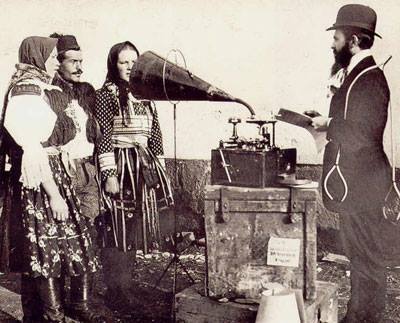
Soundlab with Peter Cusack & Ruben Nachtergaele
In this Soundlab we will investigate and fine tune how to take recordings to a live audience.
What makes a recordist a good performer? Where do personal and artistic ambition play? How do you communicate with an audience?
As a point of departure, the participants will need to find out and define for themselves what value and meaning live performance with field recording might have. Next to the obvious motivation of sharing sonorous qualities with an audience, personality and skills make the difference. One can be more a storyteller, an other a biologist. Some will process fiercely while others swear by secure selection and simple playlisting. Others even go to the boundaries of the recognizable look and deform the material to make a new fiction.
13 Feb : On the first day Peter Cusack will share his practices, knowledge and reflections, including his research during his residency, followed by hands-on exercises.
14 Feb : The second day will be guided by Ruben Nachtergaele, participants will be invited to present their own practice in regard to performing with field recording, and discuss each others work, and there will be time for practical exercises.
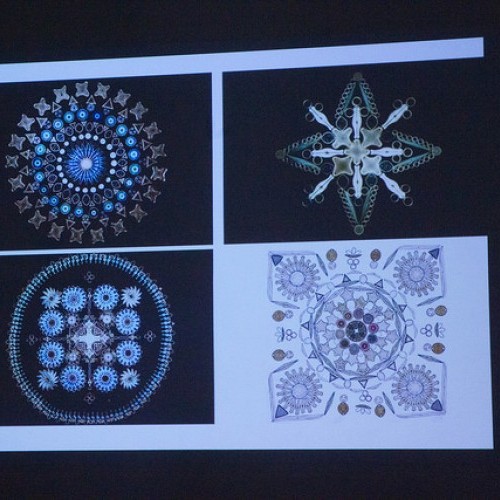
CTM 2016 micro-residency
From 29 January to 7 February 2016, ten international and five Berlin-based sound art students and emerging practicioners were invited to participate in a SoCCoS Micro Residency during CTM 2016 Festival. Apart from visiting the festival's many concerts and events, the students took part in a programme developped together with the Humboldt University Chair of Transcultural Musicology. A special thank-you goes to Dahlia Borsche Carsten Stabenow, Eric Mattson, Davide Tidoni, Carsten Seiffarth for helping create the programme, Bianca Ludewig for coordinating hospitality and leading the activities, as well as volunteers Kyra Crisp and Salomé Stressing from SAE's Music Management class.
INTIVED MICRO-RESIDENCY PARTICIPANTS
Anabela Veloso (PT), André Guerreiro Pinto (PT), Andrew Simon Miller (AU/DE), Benjamin Düster (DE), Carlos Humberto Ortiz Ariza (CO/DE), Caroline Profanter (BE), Dejana Sekulic (BE), Diana Combo (PT), Mateusz Śmigasiewicz (PL), Niklas Meier (DE), Olli Aarni (FI), Philipp Koller (DE), Primoz Sukic (BE), Raimonda Žiūkaitė (LT),
17:30 Meet & Greet Dinner WAU
(Hallesches Ufer 32, 10963 Berlin)
12:00 - 17:00 CTM Discourse Programme in collaboration with Humboldt University (Studio 1)
http://www.ctm-festival.de/festival-2016/transfer/discourse/
20:00 Thank You / Wrap-up dinner
<a data-cke-saved-href="https://m.soundcloud.com/internet-7" href="https://m.soundcloud.com/internet-7" target"="">Sunday 07.02 MusicMakers Hacklab - “Future Rituals” Finale
15:00 (HAU2 - Hallesches Ufer 32, 10963 Berlin)
The culmination of a week of collaborative development at the MusicMakers Hacklab sees participating artists move from the laboratory to the performance venue.
About the Hacklab: http://www.ctm-festival.de/festival-2016/transfer/musicmakers-hacklab/?type=0
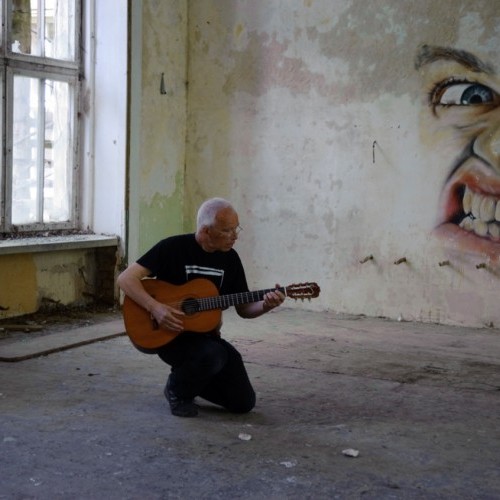
Residency Peter Cusack
The idea of the residency to explore how I can use field recordings in performance, both as a soloist and with other performers. The intention is to leave the recordings recognisable so that their information content remain significant but to make them flexible enough to play with other instruments (my guitar) or performers, mostly through improvisation. Spatiality, probably 4-channel, will be important plus developing a system for quick playback where a good range of recordings is easily available at one's finger tips.
Technically I’ve been using a ipad to control a sampler in my computer and would use this as a starting point. I’m also keen to find ways of triggering visual images with the same system. The mixture of field recordings and still images has long been an interest and it would be good to make it performable. I hope that one or two Brussels musicians/sound artists would like to experiment with me on a few occasions perhaps leading to a performance at the end of the residency.
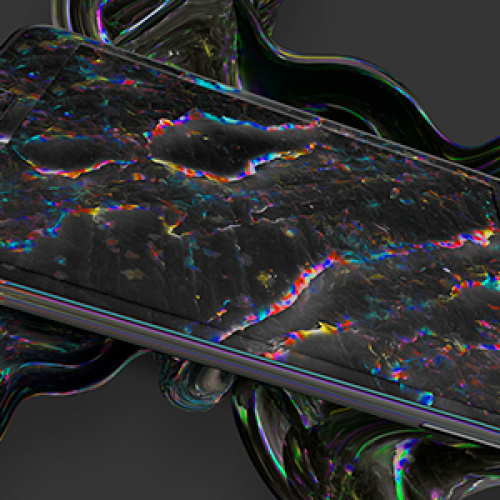
CTM 2016 Radio Lab
Returning for a 3rd edition, the CTM 2016 Radio supports commissioned work that proposes ideas for pairing the specific artistic possibilities of radio with the potentials of live performance or installation, while also explore the CTM 2016 New Geographies theme. Supported by Deutschlandradio Kultur – Radio Drama / Klangkunst and CTM Festival, in collaboration with the Goethe-Institut, the SoCCoS – Sound of Culture, Culture of Sound network, Ö1 Kunstradio, and ORF musikprotokoll im steirischen herbst, the Radio Lab selected two winning projects following an open call in summer 2015. The two winners will finalise their work during a 2-week residency in Berlin mid-January 2016, and premiere their works at the CTM 2016 festival, which runs 29 January - 7 February 2016. Subsequent to their CTM 2016 premiere, the two projects will be broadcast via Deutschlandradio Kultur (March 2016).
Issuing from the Tunisian alternative music scene, with strong foundations as a funk and jazz singer, Deena Abdelwahed has been exploring the realm of electronic music since 2011. With “All Hail Mother Internet”, Abdelwahed asks “How would I have ended up without having access to internet when I was a teenager?” as a starting point to explore frustrations about feeling fixed by the constraints of a pre-defined culture, place, identity, and the strategies employed to tackle them.
“GAD Technologies” is a project by Marija Bozinovska Jones aka MBJ Wetware, an artist employing technology that is active in London and her native Macedonia. Jones proposes a collaboration with J.G. Biberkopf, an emerging Lithuanian producer whose “Ecologies” EP recently launched Kuedo’s KNIVES label. As a verb, gad is defined as “to move from one location to another in an apparently random and frivolous manner”. It is also an abbreviation for General Anxiety Disorder. Floating in a virtual realm where cultural markers, gender, position and race are symbolic and arbitrary, and where subjectivity becomes divorced from the constraints of locality, “GAD Technologies” explores fictional geographies by harvesting the overflowing streams of collective imagery. “GAD Technologies” will take shape as a live audiovisual laser performance for CTM 2016.
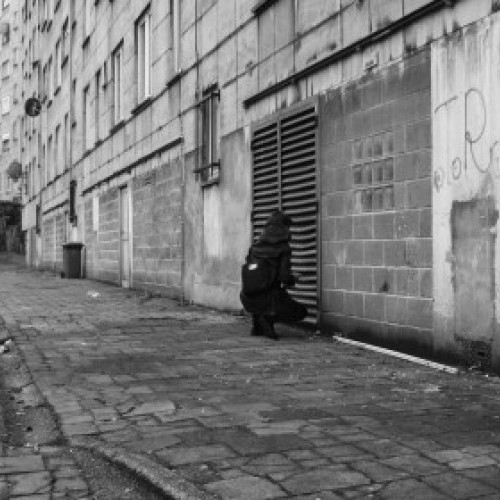
Caroline Claus: Urban Sound Design Research
Urban Sound Design Research
How can sound contribute to qualitative urban design and planning? How and in what forms might this happen?
My research consists of the development of a method for a qualitative approach of sound in regional urban planning and design projects. I use the avantgarde output and experimental collaborations of independent electronic record labels together with the acoustic ecology of Augoyard & Torgue (2005) as a conceptual and methodological basis for a participative dismantling and redefinition of the collective appropriation of acoustic territories.
Concepts like ‘techno spatiality’ and ‘sonic experience’ are used to empower a dialogue on the complex compositions of urban spaces among different cultures and groups living in urban areas in transformation. I translate techno strategies into sound art practices to capture people’s attention to the acoustic ecology of a transforming urban environment, to stimulate new uses of urban spaces. In multidisciplinary collaborations with various experts, I develop artistic methodologies to open new reflections on the planning and design of acoustic territories. The resulting practices can be didactic, provocative, poetic, socially engaged or all together.
Through a participatory mapping project, I collect data and imaginations from the bottom up. For the sonic exploration of the landscape I use new and mobile media such as binaural and geolocative audio technology, because they allow instant communication and the ability to experience virtual and real space simultaneously. These tools make it possible to add new points of perception and new layers at the observed reality.
A finality of the public participation is to narrate and discuss sonic experiences linked with the observed area and to present an alternative possible perspective on the landscape, the architecture and on the peculiar social life of the area. Participatory mapping projects are also aimed to work as a stimulus for the future development of an observed area. Resulting sound maps are used as tool to inspire strategies and tactics for urban planning and landscape design.
IN RESIDENCY Q-O2 (Proposal):
Practice based research (project) on a participatory exploration of one or two urban development zones from the perspective of “sonic experience”. During the Residency I would like to continue working on the development of an alternative qualitative method –a new lens- for recognizing and representing various audio-spatial qualities by:
• working on issues, which were raised in previous discussions, projects and talks,
• refining a participatory approach, based on knowledge of, and expertise in (local) urban development,
• working on an installation in situ allowing people to experience and hear (future) soundscapes, based on field recording and the use of (locative) cartographies,
• writing a txt which enables people to replicate and build upon the introduced knowledge: to support a better understanding of possible sonic experiences; including the sounds, spaces relevant for each map.
• looking for the potential of integrating observation results into the design practices – specifically for landscape architecture, revealing specific creative strategies, tactics and tools.
• Exploring the social, urban knowledge of in- formation on sonic experiences, environments
• Exploring the role of sound as medium of interaction to encourage, empower citizens to take part in and/or start up civic self- organization practices.
• elaborating on different angles/perspectives for developing the approach
• experimenting with methods such as work- shops with inhabitants and collective mappings of everyday sonic experiences.
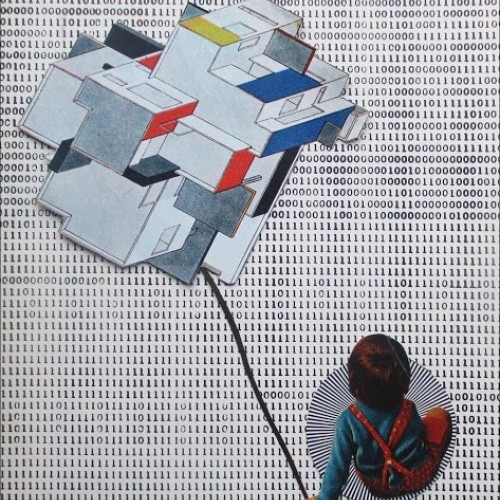
Daniel Brozek
The main subject for Czarny Latawiec’s sound works is the process of tracing fagile correlations between places’ past soundscapes of places and people memories hidden behind their beliefs and daily rituals. During the residency he plans to collect vast library collections of city folklore field recordings and found spoken traces of languages and outlandish cultures. Based on this material he will try to create spacial sound environment for spectral narration of foreigner/migrant audible experience. Depending your ears tuning you can treat it as a sound collage, dance mixtape, radio work, theatre play or installation. Real time multi layer texture sound and space experience is the thing.
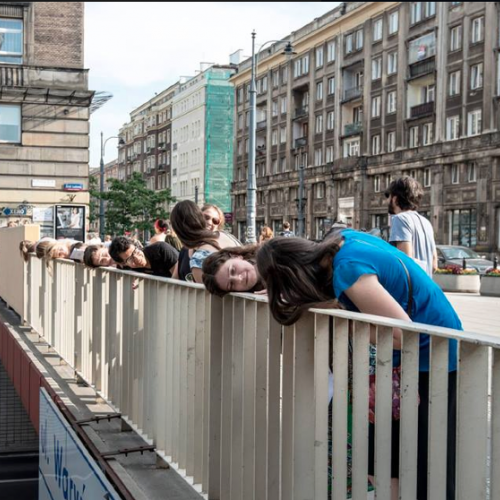
SoCCoS Warsaw Open Session
During the SoCCoS partners meeting we invite audience to participate in two special events!
Studio MDM
9/15, Marszałkowska Street, Warsaw
Free Admission
December 8, 2015 (Tuesday) at 6.30 PM
SoCCoS OPEN SESSION: What are the sound residencies?
Meeting held in English.
December 9, 2015 (Wednesday) at 6.30 PM
Book launch: URBAN SOUND DESIGN PROCESS by Caroline Claus
Meeting held in English with translation to Polish.
Film screening: REVERBERATION directed by Radosław Sirko
On the 8th and 9th of December MDM Studio in Warsaw, on 9/15 Marszałkowska Street, will be once again filled with sound. Two special events will take place during the visit of curators from the international network of sound residences Sound of Culture – Culture of Sound.
On Tuesday, the 8th of December, participants of the meeting SoCCoS OPEN SESSION will learn what unites and what divides the sound activities implemented on a windy island in the Baltic Sea, in a mountain village in Portugal, as well as in residency centres throughout large cities. Curators from affiliate SoCCoS institutions – Q-O2 (Belgium), Binaural/Nodar (Portugal), Hai Art (Finland), and DISK (Germany) – will share what sound residences represent to them.
On Wednesday, the 9th of December, a book launch of Caroline Claus’ URBAN SOUND DESIGN PROCESS will be held. Caroline Claus is a resident of the A-I-R Laboratory Program at the CCA Ujazdowski Castle within the frames of SoCCoS. In the book, the author encourages the residents of Warsaw to consciously design the sound space around them. This publication introduces the secrets of sound design and documents the artistic sound research of the MDM Studio space.
The artists appearing in the film REVERBERATION from Radosław Sirko are literally filling MDM Studio with sound. The film is an hour long documentation of extremely loud concerts, which were organized in plein-air conditions unaccustomed to such events – in Upper Silesia (Górny Śląsk). Before the screening, the director will talk about the film’s creation process and assumptions, on which it is based.
https://vimeo.com/133287160
POGŁOS / REVERBERATION (2015) TRAILER from Sir Radoslaw on Vimeo.
Curators: Krzysztof Marciniak, Marianna Dobkowska (AIR Laboratory, CCA Zamek Ujazdowski)
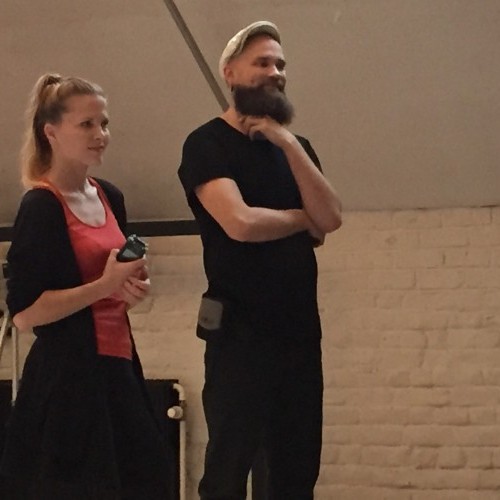
Tiina Sainila & Mikko Kanninen
SOUND - MOVEMENT - SPACE
In Brussels we will work with kids in a local community house. Most of the kids have roots in immigration. We will host a workshop that focuses on three things: sound, movement and space.
In the workshop the kids will learn how to make sounds and music, mostly with iPads. After finding the ways to make sounds, there will be movement excersises with the sounds/music the kids make themselves.
We'll also go outside and discover different places nearby: what places the kids find interesting? What kind of movement fits the place, what kind of sound? The aim is to combine all the parts: sound, movement and space together in a video, that will be shared to all the participants/their family.
We want to create an open, supporting environment to learn and be creative. Giving the participants new ways of thinking and making the every day surroundings more meaningful is also an important part of our project.

the other the self#1: midterm festival
the other the self: a series of concerts, performances, debates and workshops
Voice, gender, language, and identity are fluctuating and complex notions, strongly determined by and being fundamental to tradition and culture. They are in reciprocal interaction with each other and have a determining impact on power structures in contemporary society.
Voice is sound but also information, dialects, identity. Voice is political.
Gender is expressed, if not only, through voice, and is the first element to identity.
Language is the transportation of words and atmosphere through voice and gives away identity.
Identity is made from gender, language and voice, amongst other elements.
The project will start with a three day festival from 8-10 October. On the first night of the other the self will be featuring four performances which address gender and voice holding the middle between electronic music, performance and lecture. With Jaume Ferrete, AGF/Antye Greie, Simon Vincent and C. Spencer Yeh. For the second night we are extremely pleased with the presence Pauline Oliveros, icon of feminism and experimental music, who will give a workshop, lecture and concert. The third night will give space to operatic forms, with Lina Lapelyte's Candy Shop – the Opera, Jane Dickson's Labyrinthine and a lecture-performance by Richard Scott.
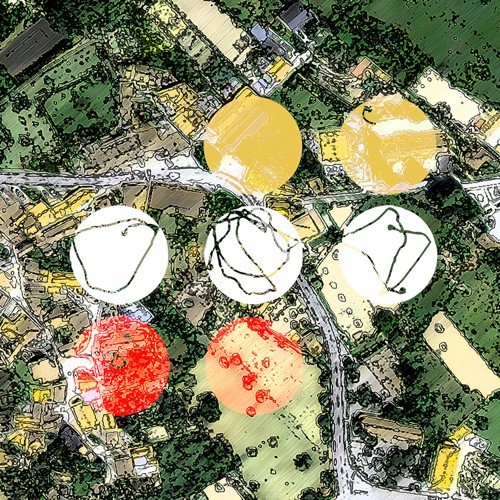
SoCCoS residency in Fataunços (Vouzela, Portugal)
Playing the Rural Landscape
Sound art residency
Fataunços, municipality of Vouzela (Portugal)
October, 7th to October 24th, 2015
Public Presentation, October 24th, 2015 at 16:00
with:
Tiina Lapola (FI)
Xabi Erkizia (ES)
Leandro Pisano (IT)
An artist residency part of SoCCoS (“Sounds of Culture, Culture of Sounds”) European Network, co-funded by the Creative Europe Programme of the European Commission.
In the year that reaches its 10th annual program of artist residencies in sound and media arts, Binaural/Nodar hosts in its second cycle of residencies three European sound artists/educators/researchers, who will all work under the generic concept of “playing the rural landscape” in its triple, tactile, sound/musical and social/geopgrahical meanings.
After several years hosting projects that worked thematic aspects of the territory that were beforehand proposed to artists (riverscapes, voicescapes, religion, rural architecture, social mobility), Binaural/Nodar returns this year to the liberating nature of the absence of a script or of a previous guiding theme, inviting artists to emphasize the organic, expressive and visceral contact with (natural and built) landscapes of the Gralheira mountain range (São Pedro do Sul), through performances, installations or talks which urge would be locally defined from the stimuli and interactions that will ultimately be present.
The three artists who will do creative/educational/research work in Fataunços have multifaceted and diverse paths, altough sharing a common deep connection with rural spaces.

Aurélie Lieman at MoKS with Dutch Instrument Inventors Initiative (iii)
SPEECH ON THE THRESHOLD BETWEEN MEANING AND MUSIC
Aurélie Lierman will during her residency at Moks research the speaking voice in an acousmatic context by creating a vocal theater piece, exploring the boundaries between music and meaning.
The main goal of Aurélie's stay will be to develop the basic concepts and construct a framework for her new research on voice, speech and meaning. As a vocalist and musician, she is interested in these concepts, and wants to create a vocal theater piece, exploring the boundaries between music and meaning.
Besides the moments were she will largely focused her attention on reading and recording, she has intention to collaborate with iii and produce work together.
Solo and collective creations with iii collective member Wen Chin Fu will presented at the 'Heli festival' (Tallinn - http://ule-heli.ee) as well as in the nomadic performance series 'No Patent Pending #15 & #16', which will take place in different venues, in Mooste and Helsinki.
Aurélies and Wen Chins performances focus on integrity of body, sound and space.
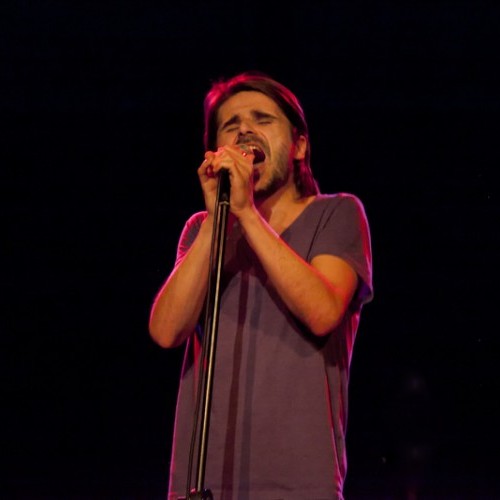
Residency: Jaume Ferrete
The research Afónica/Masculinities is a document as well as conversation based research and creation project on the issue of masculinities. It fits within the frame of the growing interest in this issue in academia and social movements. Special attention is paid to the problem of unsaying (from) a position characterized by the privilege of saying.
For this project the voices of that unsaying "male" position, if they can happen should be subjected to - possessed by - other voices. Repeat after them, as Echo the nymph. Be objects of ventriloquism. If they sound, these voices should doubt, stammer. Be voices of the loss of the control of the body. Stuttering, agitated by the squeaks of puberty -a sign of change-. With falsetto: ridiculed. Hoarse, flaccid voices, that can not.
Afónica/Masculinities builds on the work Jaume Ferrete has done in recent years on the subject of the political dimensions of voice and is developed among Catalan, Spanish, Latin-American and European contexts.
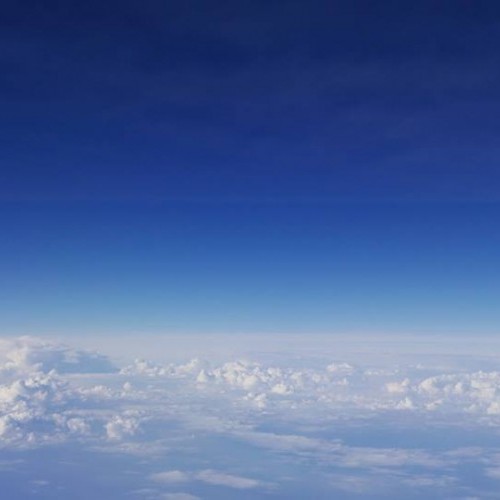
CTM Siberia Residency 2 - GrawBöckler
Duo Graw Böckler added another chapter to their ongoing “Let’s Talk about the Weather” project during the CTM Siberia festival, which took place 14 - 21 September 2015 in Novosibirsk, Russia. the project explores different particuliarities of language, taking the weather’s position as the lowest common denominator for a conversation as a starting point, and elevating the subject by artistic means.
The duo interviewed CTM Siberia participants and festivalgoers, as well as the residents of Novosibirsk, asking them to describe diverse feelings and thoughts using weather-related words and symbols. Currently assembling the footage into a montage, a whole new range of colour and expressions from Russia and Siberia is now being added to their ongoing weather “episodes”.
GrawBöckler also gave a presentation of their body of work within the CTM Siberia programme, on 16 September at the Novosibirsk State Library.
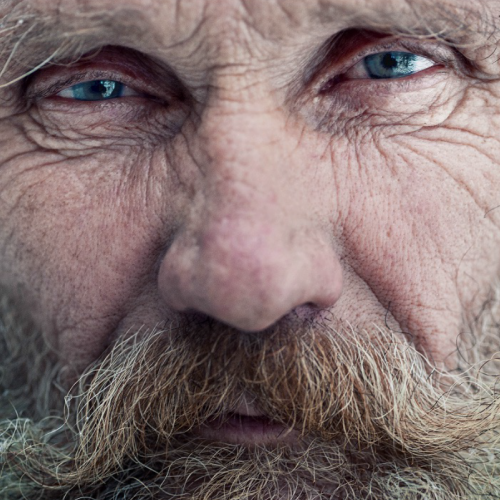
CTM Siberia Residency 1 - Soundwalk Collective
As part of CTM Siberia festival, which took place 14-20 September 2015 in Novosibirsk, Russia, Soundwalk Collective affiliate Arthur Larrue conducted preliminary research into an experimental multimedia piece that will see him return with the Collective’s founder, Stephan Crasneanski, to Siberia, specifically to the Altai Mountains found some 600Km south of Novosibirsk. In March 2016, Larrue and Crasneacki will collect sound and visual materials for the project, folloing the below concept. The final work will be premiered in 2017.
Oтшельник
The one who left
Experimental multimedia piece initiated by Soundwalk Collective, based on an original idea by Arthur Larrue.
It starts from a russian word.
Oтшельник (otchel'nik) means "the one who left".
It designates the figure, both mythical and real, of one who decided to live in the wild, either by force or through a conscious decision. Set apart from cities and industries, from history and political orientations, a certain number of people have taken the opportunity to disappear into the huge natural and hostile territory that is Siberia. To them, the snow-covered immensity appeared as a perfectly blank page.
In the Siberian Altaï region, such individual destinies have collectively fomented a culture of deep spiritual achievement. Sharing borders with Mongolia, Kazakhstan and China, the Altaï is actively connected with ancient Siberian Asian roots. Its mountains, taiga forest and very long winter compose a perfect expanse for such runaways.
All of the sounds, natural and human, from noises to music, from dialogues to prayers, are an expression of this life into the wild and reflect a certain knowledge that is built on practical experiences, and which will never be theoretical, but instinctive. The piece’s intention is to capture this intimate and mystical science through sound, image and words.
Старец (starets), Bear Hunter, and Shaman are the faces of the same Man, turning to nature.
A deep tradition of these fugitives still remains in Altaï. This tradition is connected with several layers of Siberian culture and offers a peculiar glance on a little-known segment of Russian society.
A poetic portrait of the отшельник through a sonic journey composed with exclusive in situ recordings collected during a month of expeditions, and a sketch of travel through the Altaï Loners community.
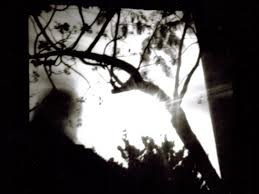
Residency: Joao Farelo
Joao Farelo is a multidisciplinary Portugese artist, he will work on a site specific project in Brussels.
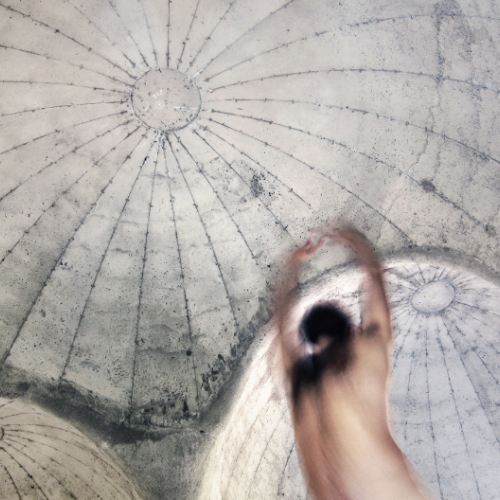
Hai Art micro-residency in Hailuoto
Inclusion of Complexity
The micro-residency will host 10 international sound artists, students and academics in Hailuoto to investigate, research and experience remote off grid situation, encounter silence and sparse nature in relation to sound. The participants will engage with locality and the island matter as well as Hai Art art works Sonic Bikes by Kaffe Matthews, The Organum by Lukas Kuehne, The Hailuoto Sound Map by Juan Duarte Regino and the down-village mediaLAB.
Accommodation
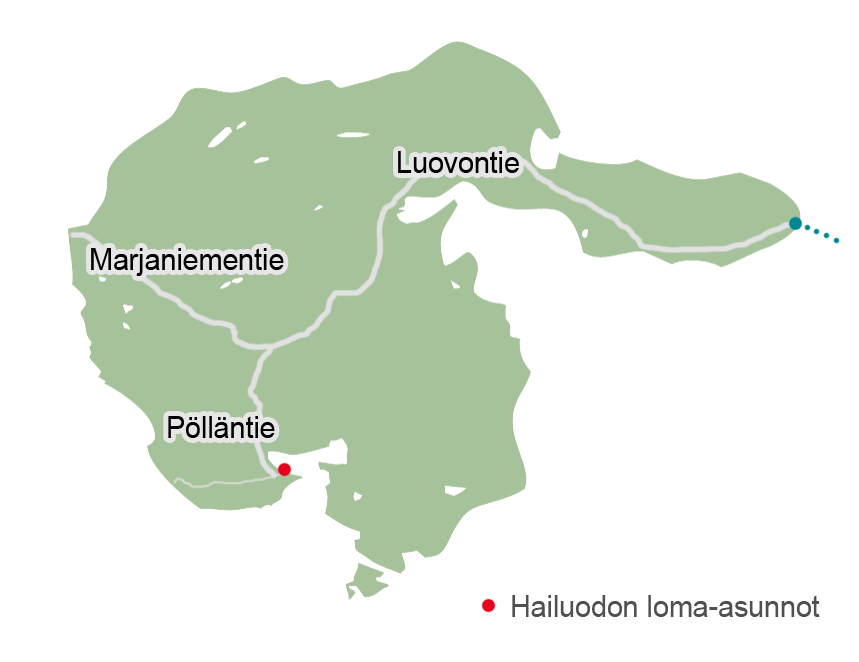
http://www.hailuodonlomaasunnot.fi/
Program
• down-village Media/MakersLAB

LECTURE & WORKSHOP on Acoustics & Sound @ORGANUM sponsored by AKUKON
with Henri Penttinen, PhD in acoustics at Aalto University in 2006 and Anni Haataja, acoustic consultance
Workshop structure
- a lecture on room acoustics and sound source acoustics
- pair work for finding interesting sound source location and listening location pairs
- acoustical measurements of the space
- results of the measurement
- summary on points: "how to play the room"
- open discussion throughout the workshop
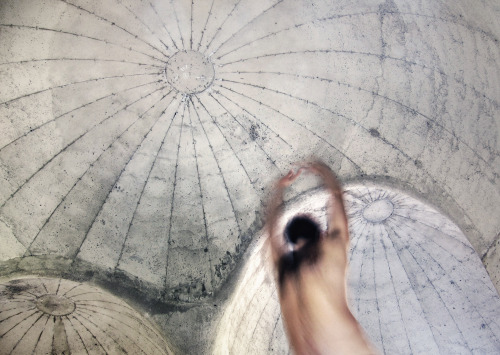
Micro-residence: participant list
Anne Lepère
Belgian sound artist
http://annelepere.tumblr.com/
https://soundcloud.com/anne-lepere
Jacek Sotomski
composer, graduated from Karol Lipinski Academy of Music in Wroclaw in Agata Zubel composition and Cezary Duchnowski computer composition class.
http://sotomski.eu/
http://soundcloud.com/jaceksotomski/
Marine Drouan
KRITZKOM / electronic music composer and graphic design, french based in Berlin
http://www.kritzkom.com
Kamila Stasko-Mazur
Phd student at the Wrocław University (Poland), Cultural Studies Departament, specialization - Musicology
http://pracownia.audiosfery.uni.wroc.pl/english-version/
http://pracownia.audiosfery.uni.wroc.pl/prezentacje/
http://musicaelectronicanova.pl/en/men/2015/edumen
Andrew Jarvis
Sound Artist based in East Sussex, UK
https://soundcloud.com/andrew-j-jarvis-1/finland-small-extract-2
http://no-mind-radio.tumblr.com/
https://www.youtube.com/watch?v=e7XU1g_ykmw&feature=youtu.be
Kinga Kozłowska
Finishing cultural studies, based in Warsaw, Poland [took part in Juan D Regino workshop for #soccos]
https://www.facebook.com/pages/Teenage-Lightning/421932161311922?fref=ts
Federico Dottini
composer, DJ from Italy, Milan
studied Electronic Music Composition at IRMus, Acoustics, Psychoacoustics, History of music
and a massive module of Max/MSP
https://soundcloud.com/eulennull/hamas-rules-4-30-am
Paweł Paide Dunajko
DJ, music critic, an activist of the Wroclaw-based internet radio 'radio-alternator.com'
representative of a new literary genre - Liberature
https://soundcloud.com/fieldworkspaide
Izabela Smelczyńska
Musicologist and Journalist based in Warsaw - sound studies and sound art
Antoni Michnik - researcher and performer from Sopot, Poland - a member of a group called Grupa ETC, and editor in Glissandro
additional info
More: info@haiart.net
FOLLOW: on twitter @haiart1 or facebook
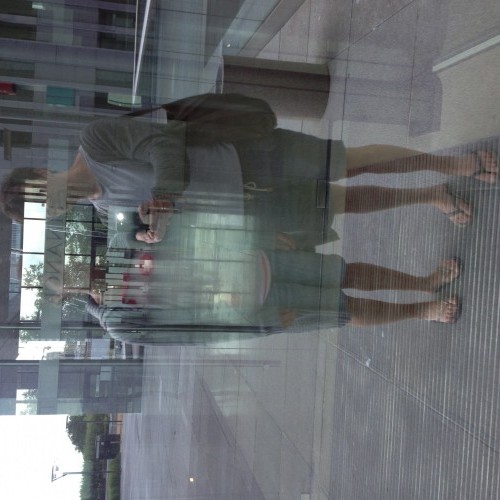
Susana Santos Silva & Torbjörn Zetterberg
The first album of Susana Santos Silva (trumpet) & Torbjörn Zetterberg (double bass) was recorded in the north of Sweden. In a snow covered cabin in the mountains, they captured the harsh and at the same time extremely beautiful and tranquil surrounding environment. This incredible experience resulted in a work in which nearly everyone could hear mountains through music.
For their next recording Susana Santos Silva & Torbjörn Zetterberg want to experience city life and all the different facets it holds. The idea is to bring instruments and recording equipment in order to explore the town. They make a stop at those places where something is worth being captured and shared, wherever they feel inspired to create.
The music will happen between the two musicians and the surroundings, between a trumpet and a bass player. Even as between a singing bird and the music of a river, the traffic, people talking, noises, vendors at the local market, fuzz of the metro station, church bells and even more.
In short, anything they might find on their Brussels sound explorations.
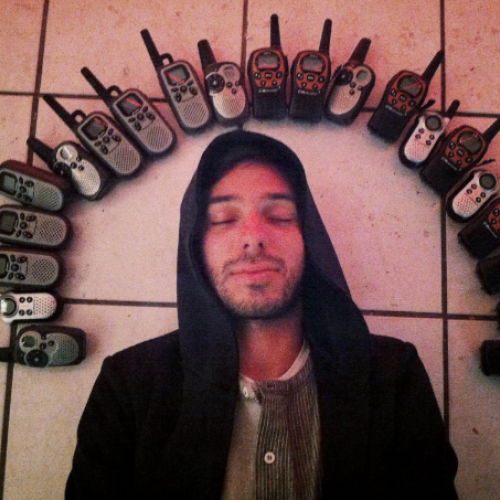
Luka Ivanović aka lukatoyboy visits Hailuoto
Lukatoyboy / Luka Ivanovic - Walk That Sound - Walkietalkies
Walk That Sound is a participatory sound installation/performance aimed at spontaneous development of dialogues of sounds and words via network of amplified walkie talkies. It premiered at CTM festival in Berlin 2014, and its radio edit was broadcast on Deutschlandradikultur. The second staging was adapted to the city of Braga in Portugal, as a part of the residency at Semibreve festival, with the title “Braga, over & out” in October 2014.
Walkietalkies are for decades used in maritime, aircraft, security, childcare and event production surroundings. they also offer the cheapest communication for a group traveling together while abroad.
Usually in reach up to 12km (in dense cities, this distance is about 23km**) cheap walkie talkies (a pair costing like an entry level mobile phone) are capable of only two features : to either send or receive a sound at time. With repeating those actions, a fragmented conversation if formed: it has a two consecutive, but not parallel streams: talking (or transmitting any sort of sound) and, on the other side, listening that sound. Although it might sound like a downgraded phone call, but because of its plenty of frequency ranges, its free spectrum and almost unlimited number of devices and channels, it has a specific sonic quality and different user setup. With a possibility that many users are on the same channel (frequency), one sender can have as many listeners as there is devices (plus people gathered around each device). This way, a transmission is not "one on one" anymore it can go from one to dozen, or a couple to a couple of dozens, and so on. Meanwhile, interference from unknown, but nearby, walkie talkie users can appear. They are a sort of spam, but in form of a dialogue, overheard parallel narratives, whose parts we stumble upon on and is up to us if we will enter a conversation or change to a next/empty channel. These dialogues form parallel microlocal realities we can be sure that these stories are in a walking distance, but still, they can sound like from another world, coming suddenly on air, unrelated and almost unreal. The paradox of free and (un)secured, both inferior and superior communication of the walkie talkies: Except for the price of a pair of walkie talkies, the communication is free, inedependent of the operators and providers. It is probably the last supermarket available tool for unlimited
communication, though lacking in distance and high fidelity. There is no setup, and there is no privacy, although the chances that a communication is shared with an undesired participant is small he or she should have to be in less than 2km and on the same channel in order to eavesdrop. There is no option to archive except to record via audio output, and it’s possible that it’s actually the least monitored (and archived) kind of communication at the moment.
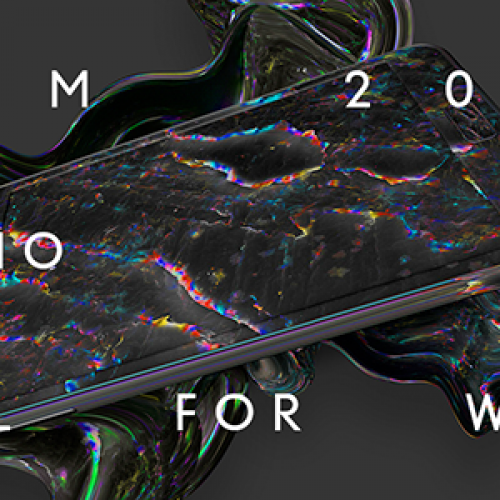
CTM 2016 Radio Lab: Call for Works
CTM Festival and Deutschlandradio Kultur – Radio Drama / Klangkunst, in collaboration with the Goethe-Institut, the SoCCoS – Sound of Culture, Culture of Sound network, Ö1 Kunstradio, and ORF musikprotokoll im steirischen herbst are pleased to release a third call for artistic projects seeking unusual ideas for coupling the medium radio with the potentials of live performance or installation, while also relating to the CTM 2016 Festival theme: New Geographies.
The call is open to artists in the fields of experimental music, sound art, radio art, new radio drama, and performance. Two chosen commissioned works will be presented as a Deutschlandradio Kultur – Klangkunst broadcast and premiered as a performance or installation at CTM 2016 Festival in Berlin (29 January – 7 February 2016). The works will also be presented by the Österreichischer Rundfunk (Austrian Broadcasting Corporation) via one or more of their platforms (depending on the character of the works): the ORF Zeit-Ton or Ö1 Kunstradio radio shows, and/or the ORF musikprotokoll im steirischen herbst festival in Graz.
Submission deadline is 15 September 2015.
Visit the CTM festival website for detailed information and to apply.
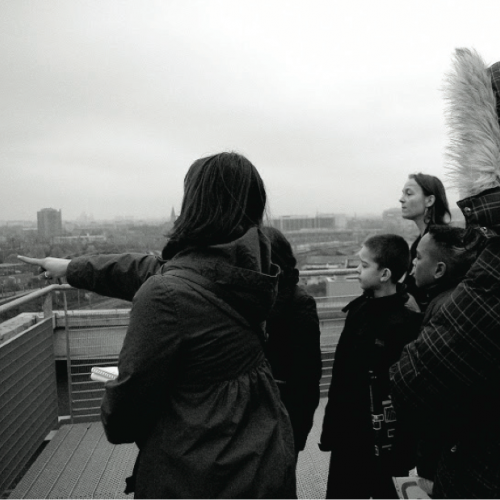
Caroline Claus: residency & workshops
- What are the elements of interaction between the physical characteristics of urban context, socio-cultural environments and sonic experiences?
- Which tools and media can assist the analysis and evaluation of a sonic environment?
- What kinds of architectural and/or urban knowledge are necessary to design soundscapes?
- What are the limitations and shortcomings of the reviewed soundscapes? and possible future directions for addressing these challenges?
- How can we design public space that encourages listening?
- How can one tactically carry out an urban sound design strategy?
Urban Sound Design Studio (June 22 – July 5, 2015)
Can we imagine a different sound environment, a possible future sonic experience? What role can urban design play in a rethinking of the sonic experiences in this context? How can different urban sonic experiences be organized and enrolled in the design of various public spaces?
The ambition of the program is to develop, question and challenge existing strategies for managing urban sonic experiences by proposing an extended method and various tools for qualitative sound analysis with a focus on the perspective of design practitioners. In different workshops we introduce a grounded understanding of what urban acoustic quality is and how we can work dynamically and creatively with everyday urban sonic experiences. We will focus on a qualitative approach of urban sound environments inspired by the avant garde output of urban electronic music and the acoustic ecology of Augoyard and Torgue (CRESSON). The aim is to go beyond a taxonomic manner of urban sound analysis in order to examine the sound environment at a greater level of structural and phenomenological depth.
Through the introduction of a method and different tools the studio offers participants the opportunity to experiment and to develop a reflection on urban sound design. Participants are encouraged to develop their own possible instruments for interventions in the public space. An experimenting with the preparation of toolboxes and practices in situ as part of a design method is encouraged. Different tools and practices can be used together to explore and represent the territory in a different way. Initial results are shared in situ with a larger public to interrupt, to inspire discussions in everyday practice and affect the planning and construction of public urban spaces in terms of acoustic quality.
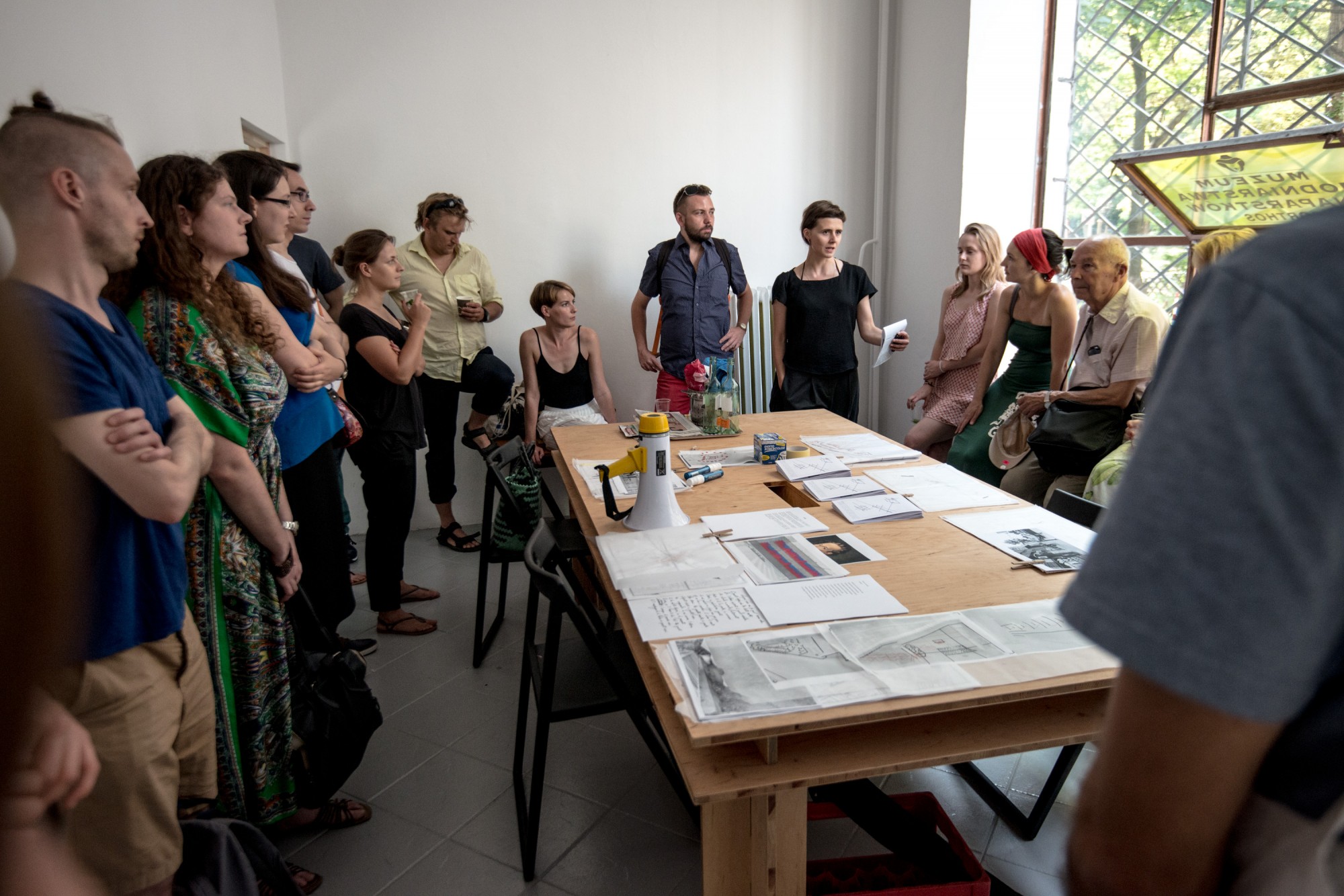
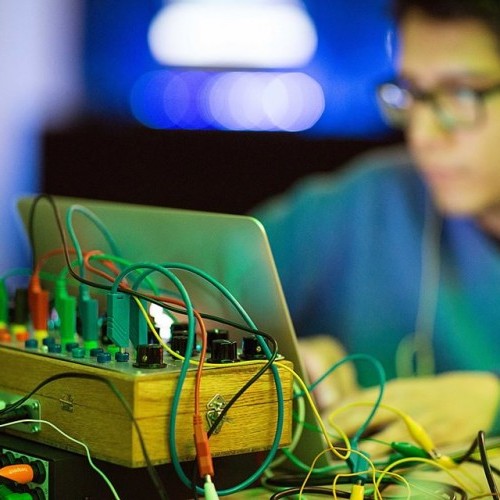
Juan Duarte Regino: residency & workshops
Pulsar Kite is an ongoing research intended to enquire into the playful practice of the kite flight by means of Sonic Augmentation. While it is a non competitive activity, a kite flight can be an activity of mere recreation without further purpose, although it can provide an opportunity to interpolate his potential outputs in the context of Generative Music. When an active user aims to control over unpredictable wind conditions, this physical interaction is transmitted to augment auditory, visual and haptic perception.
We invite you to take part in the interdisciplinary workshops of Juan Duarte (Mexico / Finland), a resident of the A-I-R Laboratory program at the Ujazdowski Castle, within the frames of the project Sound of Culture – Culture of Sound. The artist is preparing the project "Pulsar Kite," which aims to create interactive sound kites (June 2015), including a performance with them (July 4–5, 2015) within the frames of the research project Jazdów Archipelago implemented by the CCA Ujazdowski Castle. Workshop participants will be able to take part in the next stages of preparation – from choosing the place of presentation, through the construction of the kites, DIY sound workshops, development of the interface, design the formula of performance, and participation in the final presentation. The first step of the workshop will be Electroacoustic Atelier – participants will prepare their own DIY electroacoustic instruments.
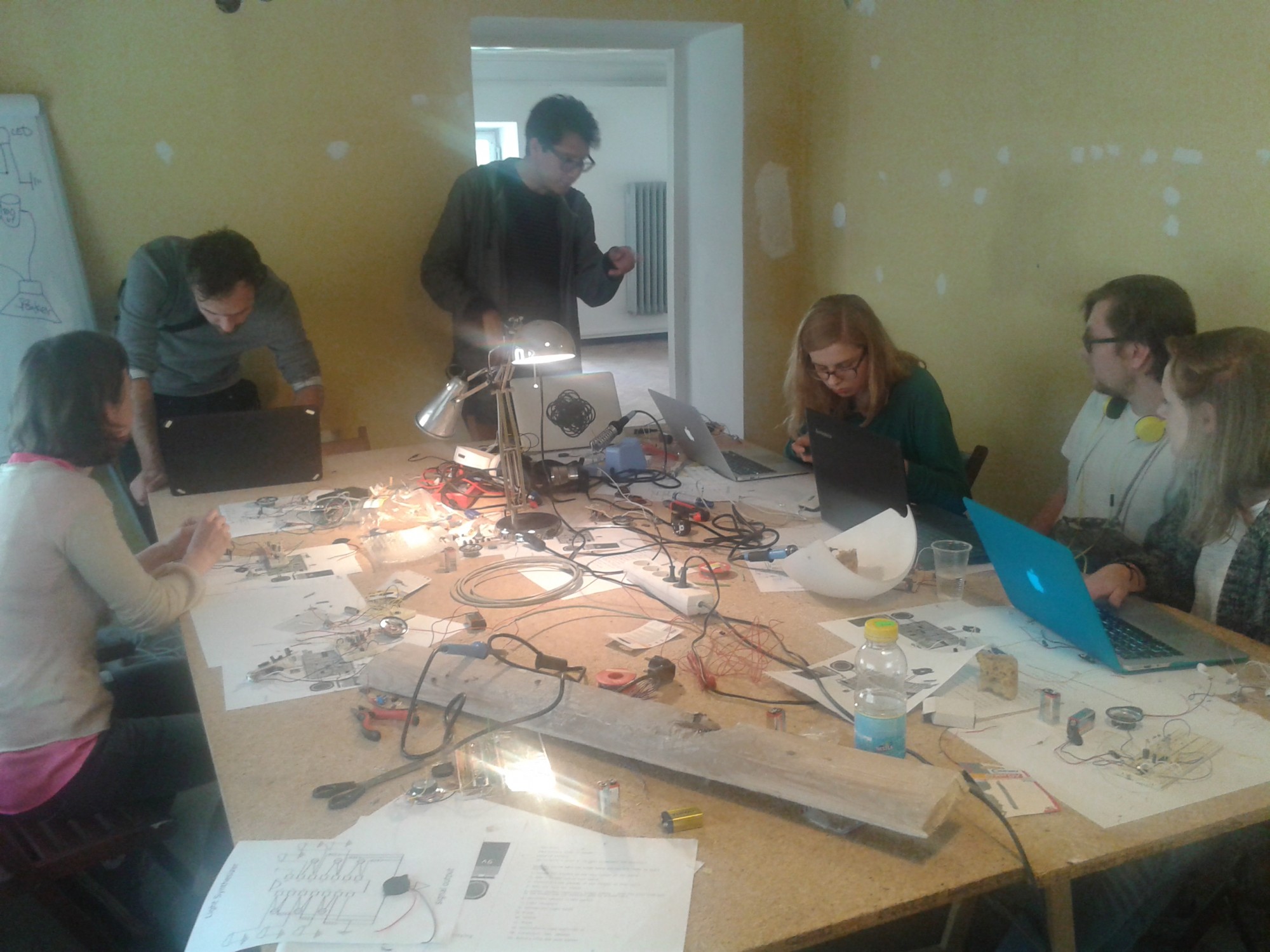

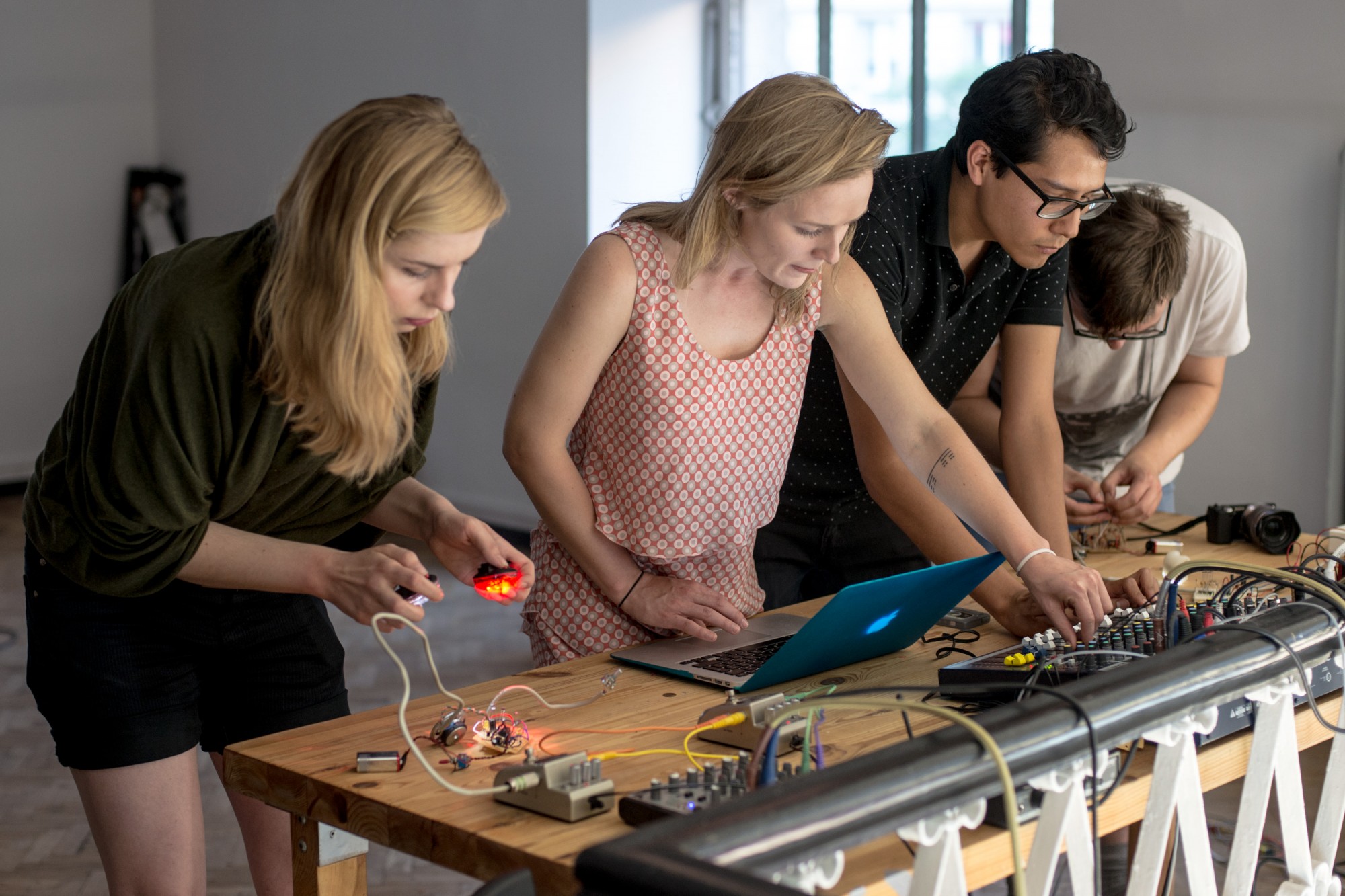
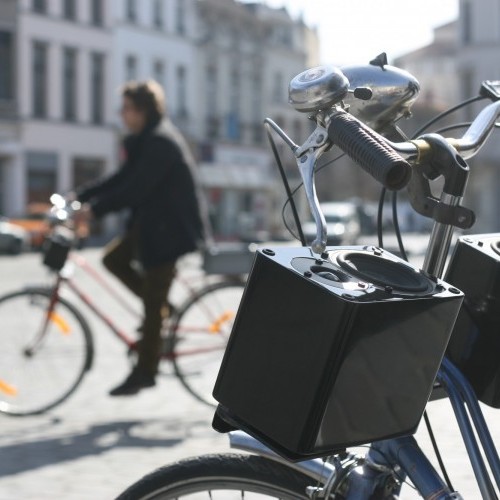
Finding Song Home - Kaffe Matthews & the Bicrophonic Research Institute
A bicycle opera by Kaffe Matthews and theBicrophonic Research Institut, with technical development by Tom Keene
Finding Song Home is the new sonic bike opera made for Brussels by Kaffe Matthews and the Bicrophonic Research Institute(BRI) with tech development by Tom Keene.
It is a work that explores the injustices of birthright and the power of nations governments to enable or prevent the free movement of its citizens. Through meeting and sharing with often illegal non-European Brussels immigrants, Matthews has gathered a mass of their stories which, intimately told through the voices of the tellers, create a multi-threaded libretto to be revealed by audience cycling the GPS linked sonic bikes through and beyond Brussels centre.
The routes the opera takes pass between La Monnaie plaza, the canal border and Molenbeek squares, re-defining these areas as sonic cyclists can pedal through, songs and narratives recontextualized as they unfurl through the shifting street's soundscape and Matthews electronic counterparts. With sounds triggered by where and how fast the bike goes, so each participating cyclist can define their own experience.
Finding Song Home is the BRI's 8th sonic bike opera. It was commissioned by La Monnaie du Munt and Q-02 and has also made and developed eight new sonic bikes in Brussels with cyclo. These bikes will remain in Brussels to be used to make and perform new works.
Finding Song Home was made through Matthews' residency with Q-02 and La Monnaie during which she explored the city, met and worked with residents she met through local community groups Globe Aroma and Vaartkapoen, as well as running route composition workshops for children at La Maison des Cultures, Molenbeek with Flemish theatre director, Ivan Vrambout.
Vernissage Place de la Monnaie: 9 et 10 mai 2015, 12:00-19:00
Vernissage Maison des Cultures/Huis van de Culturen: 10 mai 2015, 12:00-19:00
also available 12 to 30 mai 2015 during opening times at:
Maison des Cultures et de la Cohésion Sociale/Huis van Culturen en Sociale Samenhang Molenbeek
Rue Mommaertsstraat 4, 1080 Brussel
Tuesday - Friday 12:00 - 17:00
Saturday 11:00 - 18:00 and by appointment
+32 465 80 76 08
La Monnaie/De Munt
Prinsenstraat 14, 1000 Brussel / rue des Princes 14, 1000 Bruxelles
Tuesday - Friday 12:00 - 17:00
Saturday 11:00 - 17:00
tickets@demunt.be
+32 (0)2 229 12 11
The cast:
Louiza Amghizar -
Rasmia Zaaza -
Fatiha El Mrabet
- Souad Khelifa
- Malika Mderreg
- Claudine Musaniwabo -
Fatima Kamlichi - Saddie Choua
Conté Morlaye
- Maati Lhabib -
Erik Gonzalez Brinck - Prince - Ibrahim - Jimmy - Moune
Adult chorus Met-X / Lucy Grauman
Girls chorus La choraline
Musicians: oboe: Florent Buchel - trumpet: Ivan Vrambout - accordion, electric piano: Moune electronic processings, keyboards: Kaffe Matthews
Software: David Griffiths, Tom Keene
Hardware install: Ludo Engels
Audio assistance: Samson Pignot
Community support: Florent Buchel, Rika Colpaert, Julia Eckhardt, Christel Simons, José Luis Villalobos Prats
Production assistance: Lisa Hall
www.sonicbikes.net
@bicrophonics
www.facebook.com/bicrophonics

Binaural/Nodar’s spring artist residency: public presentation
Playing the Rural Landscape
Sound art residency and public event
Civil parish of South, municipality of São Pedro do Sul (Portugal)
April, 12th to May 2nd, 2015
Public Presentation, May 2nd, 2015 at 16:00
with:
Helena Espvall (SE/US)
Pierre Berthet (BE)
Yannick Guédon (FR)
An artist residency part of SoCCoS (“Sounds of Culture, Culture of Sounds”) European Network, co-funded by the Creative Europe Programme of the European Commission.
In the year that reaches its 10th annual program of artist residencies in sound and media arts, Binaural/Nodar hosts in its first cycle of residencies three European sound artists/composers: Helena Espvall (Sweden), Pierre Berthet (Belgium) and Yannick Guédon (France), who will all work under the generic concept of “playing the rural landscape” in its double, tactile and musical, meanings.
After several years hosting projects that worked thematic aspects of the territory that were beforehand proposed to artists (riverscapes, voicescapes, religion, rural architecture, social mobility), Binaural/Nodar returns this year to the liberating nature of the absence of a script or of a previous guiding theme, inviting artists to emphasize the organic, expressive and visceral contact with (natural and built) landscapes of the Gralheira mountain range (São Pedro do Sul), through performances and/or installations which urge would be locally defined from the stimuli and interactions that will ultimately be present.
The three artists who will do creative work in Sul have multifaceted and diverse paths in the fields of visual arts, contemporary music, free improvisation and even weird folk/rock:
Helena Espvall (Sweden/USA) is a swedish-born composer and performer, known for her participation in the post-millennial psych-folk and free improvisation scenes. Her main instruments are the cello, guitar and voice. She moved to Philadelphia in 2000, having initially dedicated herself to free improvisation (especially with cello), and later actively involved in the city’s weird-folk circuit, having been part of groups such as Espers and The Valerie Project and formed Anahita, a duo with Tara Burke. A collaboration with Masaki Batoh (Japanese psych band Santo) produced two albums released by Drag City. The first, “Helena Espvall & Masaki Batoh,” included several Swedish folk songs and marked the artist’s first significant vocal appearance. In 2010 she released “Lapidary”, an improvised collaboration with Marcia Bassett, a leading figure of the noise/drone scene
Pierre Berthet (Belgium). He studied percussion with André Van Belle and Georges-Elie Octors at the Conservatoire Royal de Musique de Bruxelles (first prize in 1986) and at the Conservatoire Royal de Musique de Liège (improvisation with Garrett List, composition with Frederic Rzewski and music theory with Henri Pousseur). He designs and builds sound objects and installations in natural and built spaces (steel, plastic, water, magnetic fields ….) presenting them in exhibitions and in solo or duo performances, with Brigida Romano (CD “Continuum asorbus”, Sub Rosa) or Frédéric Le Junter (CD “Berther Le Junter”, Vandœuvres). He played percussion in the Arnold Dreyblatt’s Orchestra of Excited Strings and released three CDs so far: “Un piano cadre prolongé” (Sonoris), “Two pieces continuum” (Sub Rosa) and “Extended loudspeakers” (Sub Rosa).
Yannick Guédon (France/Belgium) is a French born composer, singer and performance artist, currently living in Brussels.His work focuses on tiny variations of timbres, the inner pulsation sensations and subjective notions of time, silence and error. He pays particular attention to the place and context in which each musical situation is displayed. In 2006 he wrote his first piece, pitulatif, for a solo voice. He followed it with ticdê (2007) a vocal trio, infimie (2007) for voice, electroacoustic, video and light, soupir (2009) and pause (2010), for clarinet, guitar, percussion, cello and voice. In 2011 he initiated the cycle of situations a _ t e m p _ s, which generated five compositions between 2011 and 2014 using a variety of instruments and devices (viola da gamba, electroacoustic settings, sound research on artis’s absence, birthday candles, etc.). He has recently collaborated with composers/musicians such as Radu Malfatti, Deborah Walker, Eliane Radigue and Mattieu Delaunay.
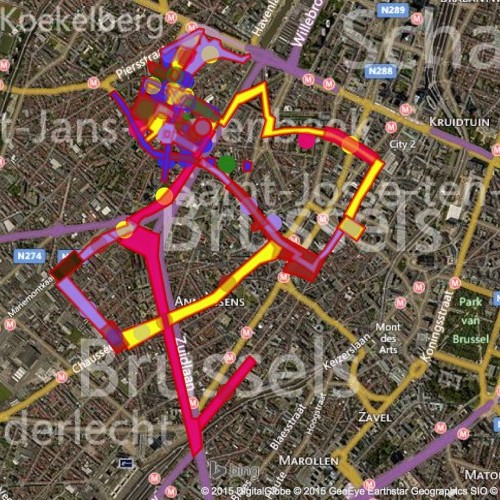
Kaffe Matthews
Kaffe is finalising Finding Song Home, together with Tom Keene, Ludo Engels en Samson Pignot, and many people who tell their stories, sing songs made by them and composed by Kaffe. The routes the bikes will go on are almost finalised.
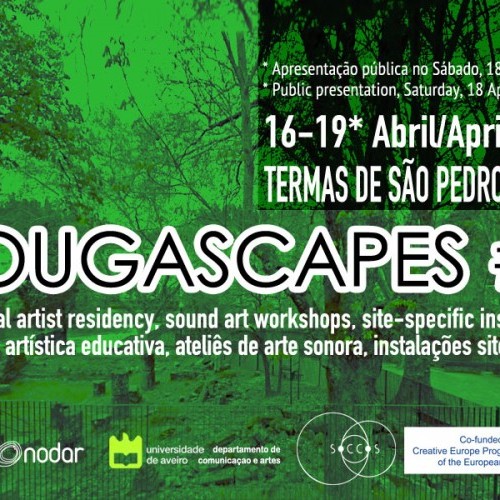
Vougascapes#2: educational artist residency
Vougascapes #2
Educational artist residency, sound art labs and installations in public space
Students of the Master of Contemporary Artistic Creation at the University of Aveiro
Co-organizers: Binaural/Nodar and Department of Communication and Arts, University of Aveiro
Termas de Sao Pedro do Sul, Portugal
16-19 April 2015
Public Presentation : Saturday, April 18th from 15:00
(meeting point: Entrance of Hotel do Parque) .
Educational residency integrated in the activities of the SoCCoS European Network, funded by the Creative Europe programme of the European Commission.
For the fifth consecutive year an artist residency addressed to students of the Master of Contemporary Artistic Creation at the University of Aveiro will be developed in the municipality of São Pedro do Sul, with which Binaural/ Nodar has an ongoing partnership that is developed in several areas particularly related to the fields of sound art techniques and to the reflection between artistic creation and specific territorial spaces and communities .
A group of ten students will explore the creative potential of (both natural and cultural ) heritage spaces of the oldest and largest spa in Portugal, of Roman origins. The termal water baths were built in the 1st Century. In the Middle Ages the fame of the spa was such that even Afonso Henriques, the first king of Portugal, was trated there after breaking his leg in Badajoz, following a battle. The Roman building and the pool, “the pool of D. Afonso Henriques”, remain, with walls in alternating courses of stone and brick and the entries in round arches, which unfortunatelly are closed and inaccessible to the public. Termas de Sao Pedro do Sul are bathed by the river Vouga, a river with which the relationship has also been difficult due to pollution that prevents swimming, where so many generations of São Pedro do Sul inhabitants learned to swim and refreshed during the months of summer heatwaves.
This year, this educational residency is part of the set of activities of SoCCoS (“Sounds of Culture, Culture of Sounds”), an European sound art network that includes, in addition to Binaural/Nodar, the cultural organizations Q0 -2 (Belgium), Hai-Art (Finland), Disk/CTM (Germany) and AIR (Poland) and the residency will have the involvement of the artists who will be developing work at the same time in the Gralheira mountain range (Pierre Berthet, Helena Espvall, Yannick Guédon).
The end result of this residency will be a set of sound and visual installations to be presented by the students on Saturday April 18th, being commented by teachers, Binaural / Nodar’s team and, why not, by the participant audience.
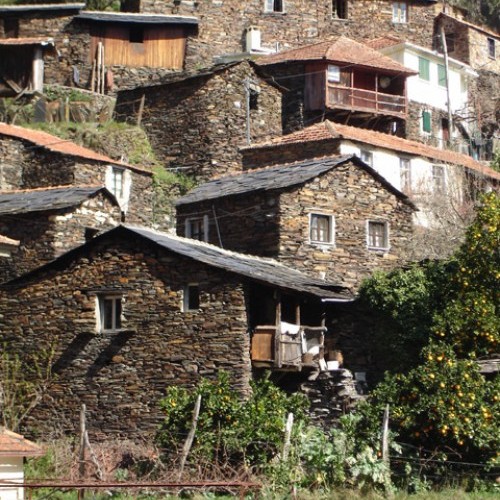
Berthet, Guédon & Espvall
Portuguese cultural organization Binaural/Nodar will be organizing its first SoCCoS residency cycle between April 12th and May 2nd, 2015 with three European artists who will deal with the general concept of playing the/with the rural landscape: Belgian Pierre Berthet, French Yannick Guédon and Swedish Helena Espvall.
During the residency artists will do field work in the mountain rural context of the municipality of São Pedro do Sul, particularly in the villages of Açores and Fujaco.
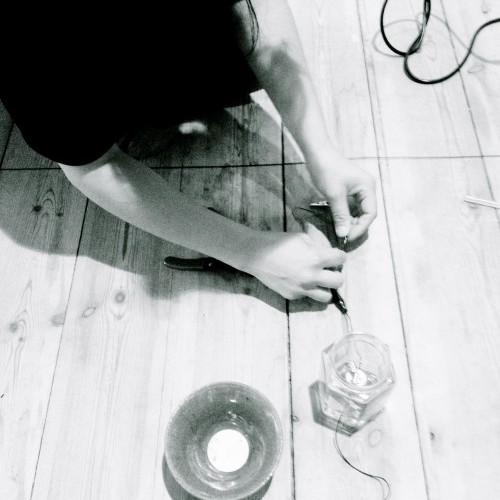
Ryoko Akama
almost empty - fields and waves
Sine waves and object vibrations respond to text. Akama's residency is inspired by the idea of field and wave as phenomena. The performance examines almost empty in order to manipulate space or materialize field.
The result of the work will be presented in the framework of Perfomatik festival.
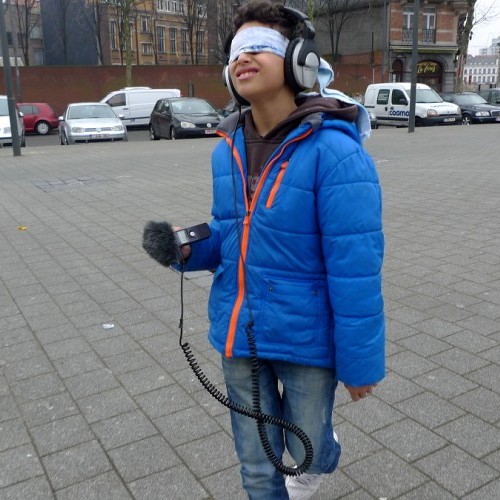
Workshop Kaffe Matthews
This is a workshop for children 10-14 years old: hunting for sound and stories, recording, editing, biking. The results will be made into a sound composition being part of the Brussels Bicycle Opera 'Finding Song Home'.

To receive a free copy of the book please contact: wydawnictwa@csw.art.pl
Download for free: https://issuu.com/air-laboratory/docs/warsoundwarszawa_cca_ujazdowski_cas
Warsound|Warszawa: Donia Jourabchi, Taufan ter Weel, Edyta Jarząb, Dorian Batycka, Krzysztof Marciniak
Edited by: Krzysztof Marciniak
Graphic Design: Krzysztof Bielecki
Translations: Agata Klichowska, Sławomir Królak
Proofreading: Darren Durham (en), Joanna Duchnowska (pl), Jan Koźbiel (pl)
Cover Photo: ZEBRAne w kadrze
Publisher: Residencies Programme CCA Ujazdowski Castle
English/Polish Edition, ISBN 978-83-65240-24-8
128 pages, pocket size 111×160, 1000 copies
Creative Commons: Attribution-NoDerivs 3.0 Unported (CC-ND 3.0)
Warsaw 2016